AGENTS ACCESS

New York, NY – August 1st, 2022:
COVID-19 SITUATION UPDATE
All COVID-19 restrictions applied to international travelers entering the Guadeloupe archipelago have been lifted . Following a new law voted July 30, 2022, the French parliament has declared the end to the public health emergency and subsequent exceptional measures put in place at the outset of the COVID pandemic.


We Are Open!
Start booking your next getaway to the French Caribbean archipelago.
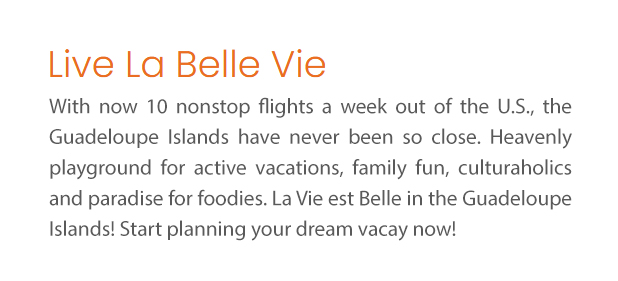
Live La Belle Vie
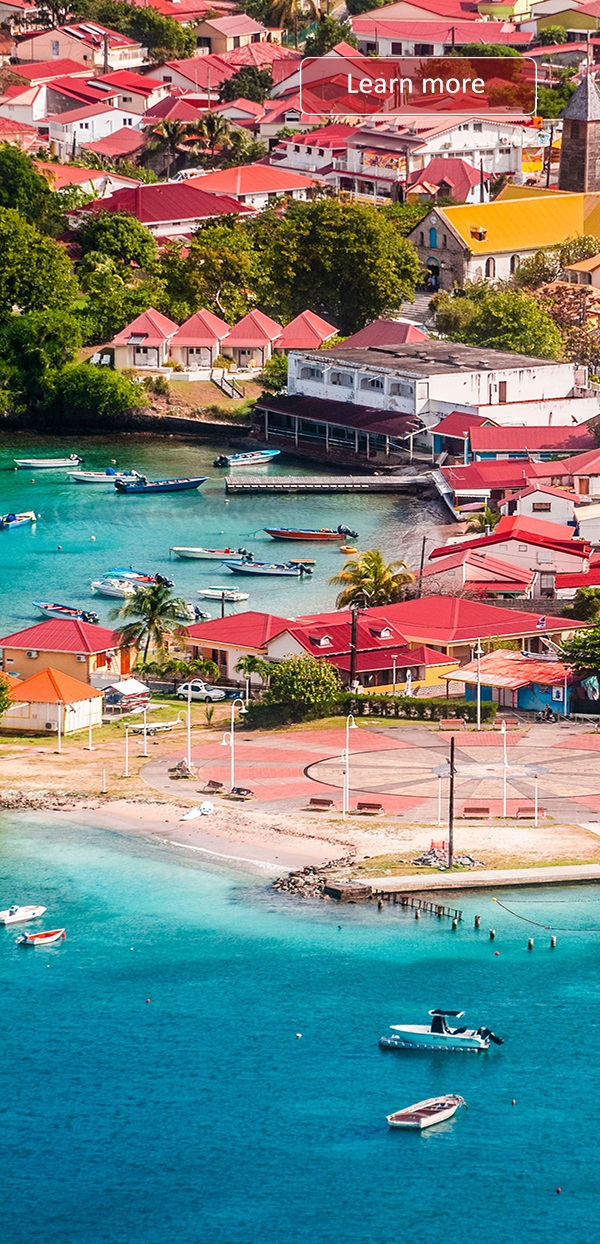
Our Archipelago
The String of Jewels of the French Caribbean, Basse Terre, Grande Terre, Les Saintes, Marie Galante and La Désirade.

A Culinary Voyage
Prepare your taste buds for an unforgettable culinary adventure !
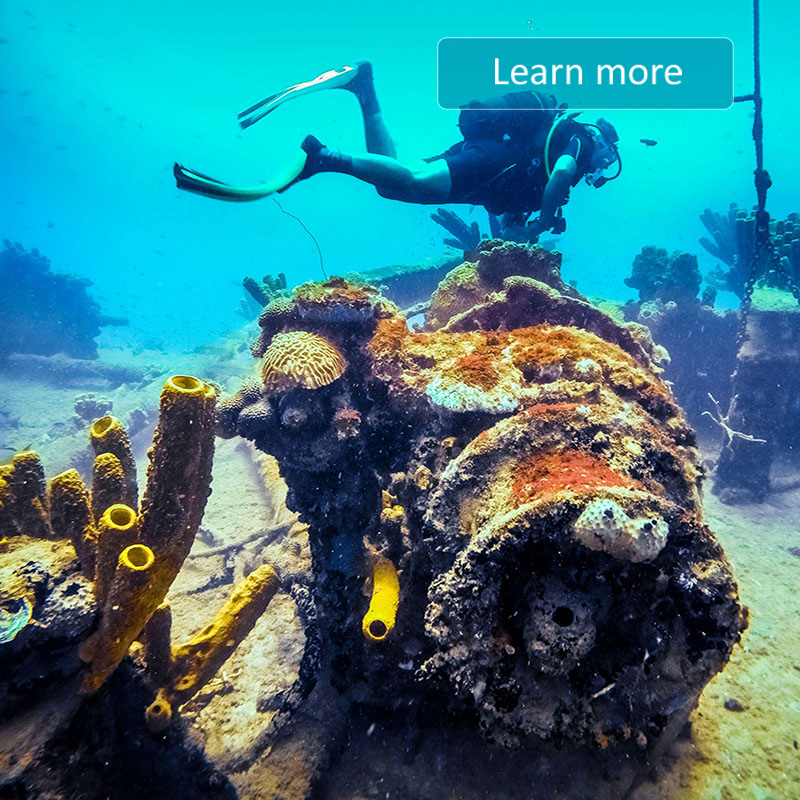
Cool Stuff to Do
Blue, green or agrotourism activities, we have it all!

Homeland of Chevalier Saint-Georges
From state of the Art MACTe Museum to World Class Classical Music Festivals, Guadeloupe is a refined mix between Modernity and Traditions.
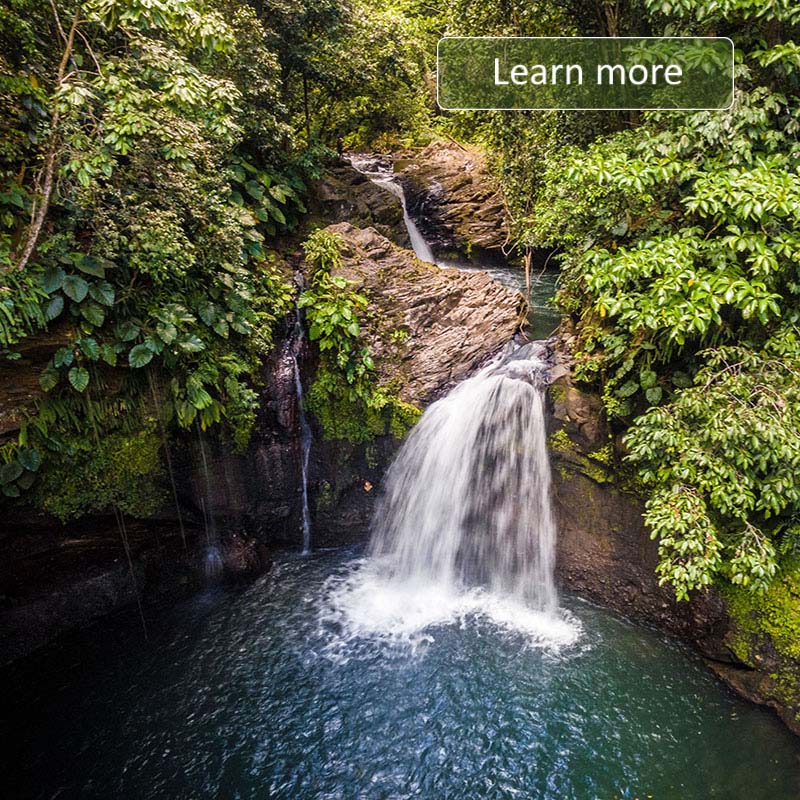
Our National Park
Find more than 256 miles of hiking trails and many gorgeous waterfalls.

Condé Nast Traveler
October 2020

September 2020

The New York Times

#11 Best Caribbean Destination

February 2020

January 2020

Matador Network

Atlanta Tribune Feature

Brides Feature

Travel Noire Feature
February 2019
What Kind of Traveler Are You ?
An ecotourist
You are in love
A beach lover
You have kids
A road cyclist
A sailer yatcher
A culturaholic
Bliss Seeker
Going to the guadeloupe islands .
Download our Mini Guide !
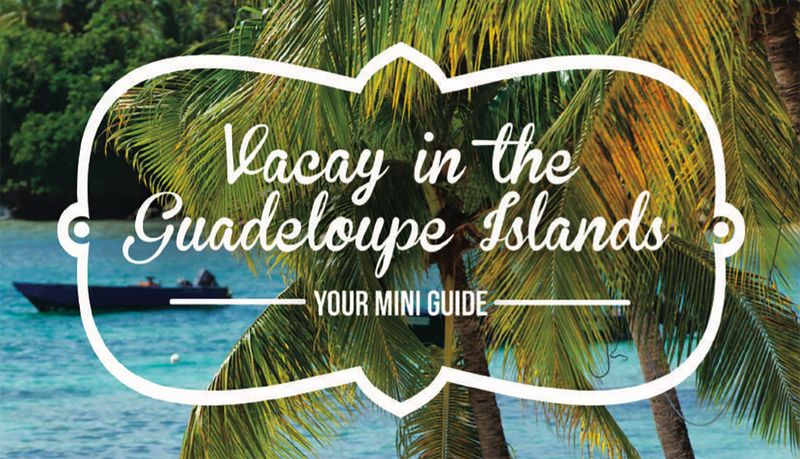
CARNIVAL IN GUADELOUPE WITH BAREFEET
Two-Part TV Special to Air on PBS, Create TV & NYC Life on Feb. 4

The Guadeloupe Islands offer a very wide selection of activities. The new and affordable direct flights from the USA cut the time of travelling in half. You could be hiking up the Soufriere Volcano, diving, island hopping or sun bathing on beautiful beaches, they have it all. – Caroline K., New York, NY
Plan Your Trip to Guadeloupe: Best of Guadeloupe Tourism

Essential Guadeloupe

Trending in the forums

Guadeloupe Is Great For
Surfing lessons.

Eat & drink

Sand & surf

- Restaurant Panoramique
- Le Rayon Vert
- La Plage Crystal Beach
- Les Saintes
- Jacques Cousteau's Underwater Reserve
- Petite Terre
- Fort Napoleon
- La Désirade
- The Death in Paradise TV Series Tour from Guadeloupe
- Private Sightseeing Tour | Guadeloupe
- Whale Watching in Guadeloupe
- Sailing and Snorkeling Private Tour to Les Saintes
- Hike La Soufrière Volcano
- Caribbean and Bahamas
5 Things To Know Before Your First Trip To The Guadeloupe Islands
Believe us: you’re going to want to visit this incredible french caribbean destination. but you need to do your homework first..
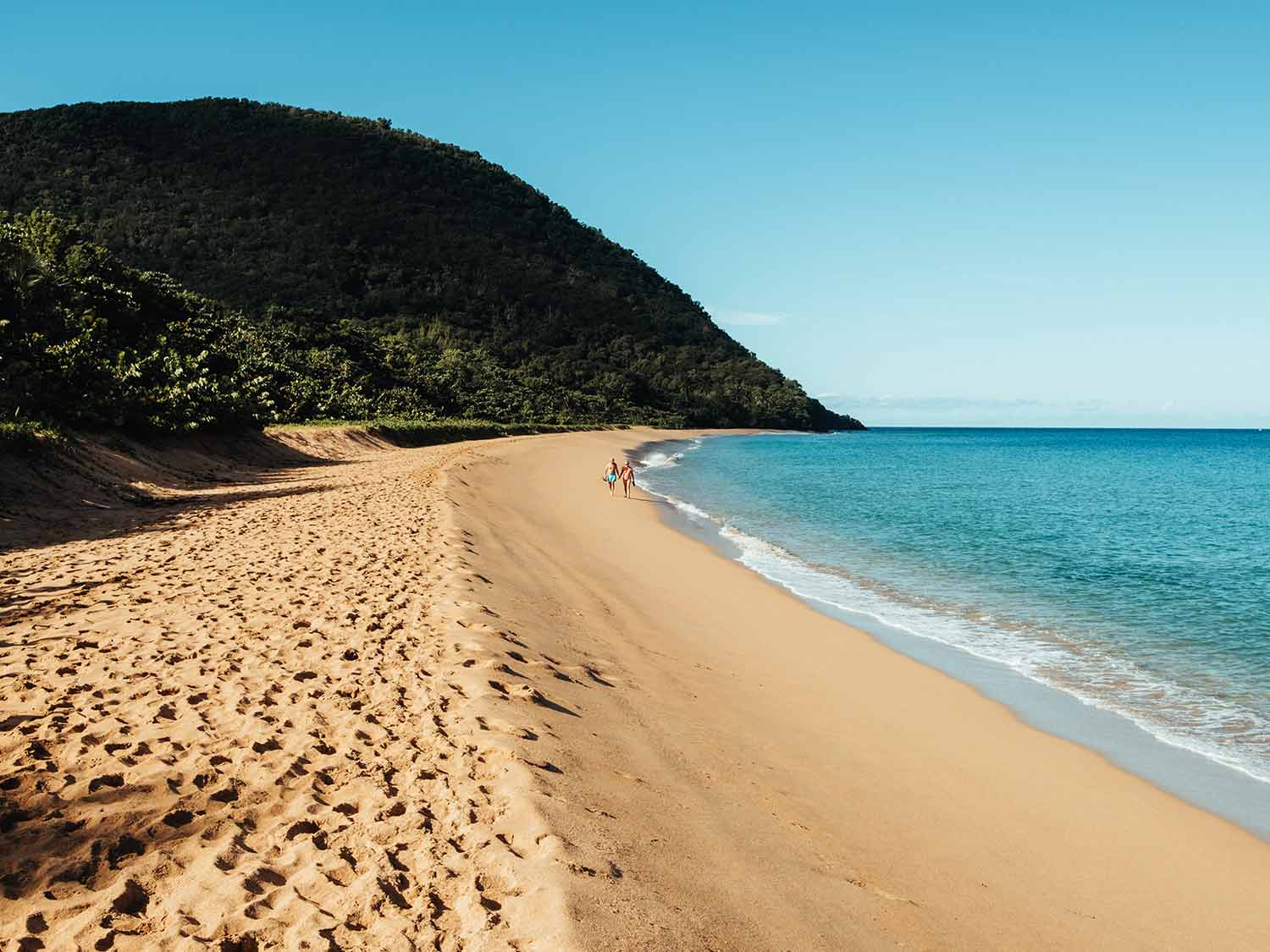
Long regarded among the Caribbean's greatest "hidden gems," the Guadeloupe Islands are poised to emerge as one of the most dynamic, raved-about tropical destinations in the region, if not the world. That's not hyperbole, at least not as much as it is wishful thinking and/or an educated prediction, because to see this place in person is to understand just how magical and spiritually fulfilling it can be.
With the addition of seasonal nonstop JetBlue service from New York City to Pointe-à-Pitre, this French Caribbean archipelago has never been more accessible to U.S. travelers, and it's high time everyone learns what they've been missing out on. The thing about the Guadeloupe Islands, though, is that this isn't the "typical" Caribbean destination. You can't, or at least shouldn't, just pack your bags and board the next flight out of Terminal 5. (Although I certainly wouldn't blame you.)
Some of this information is common sense, but it still bears repeating and reinforcing. Here's what you need to know before your first visit to the Guadeloupe Islands.
Brush Up on Your French
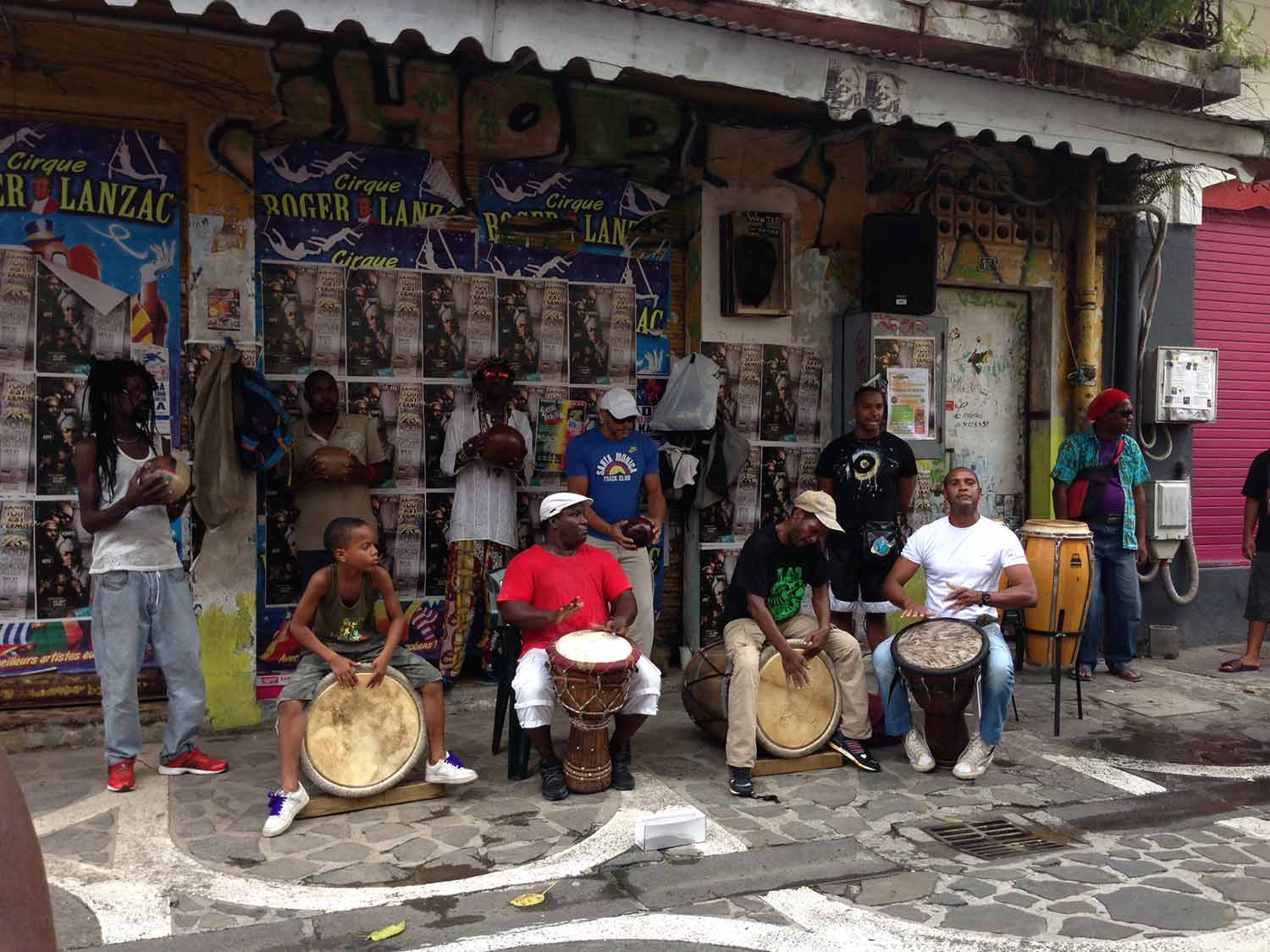
I was warned several times that I wouldn't find many English speakers here, and so I tried my best to keep my Duolingo streak running strong ahead of my flight. Even that barely helped, because when the wheels touched down my brain had stage fright, and I did things like ask, "¿Cómo está?" instead of "Comment allez-vous?" This happened way more than I'd like to admit, but I know I'm not alone.
I recommend planning far enough in advance so that you can put some real effort into learning the basics. It isn't just about being able to communicate with hotel and restaurant staff, although that is a very important component. You should also want to understand and appreciate the regional cultures, and so being able to communicate with the people is essential.
The people are so genuinely nice and warm here that you'll want to at least have the opportunity to make new friends and learn from them. After all, they're the real experts and will offer the best advice on where to eat and drink.
Forget Me Nots
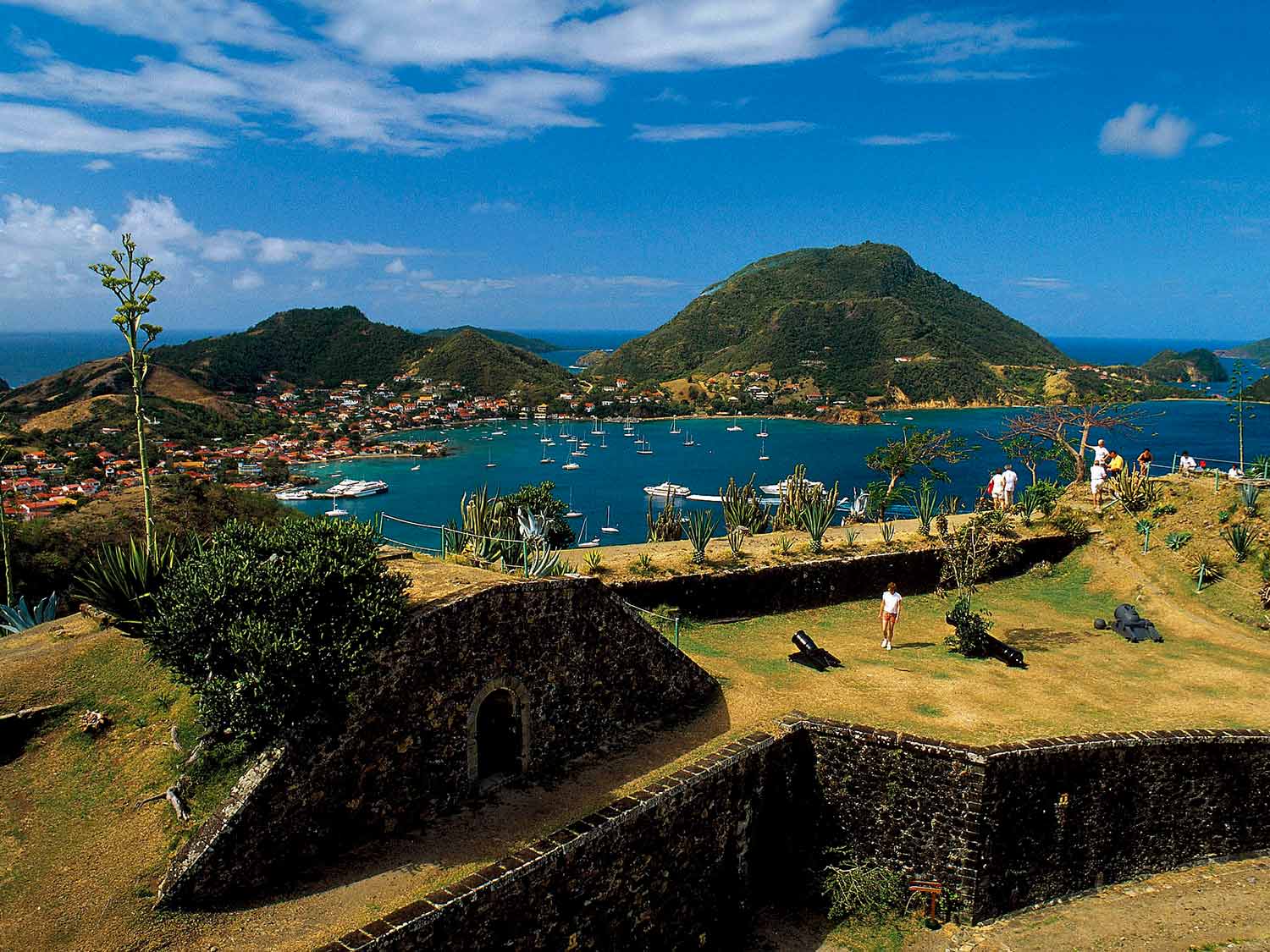
No matter how many times we rehearse vacation preparation in our heads, some of that common sense gets shoved into a packing cube and is forgotten. Like, for example, when we landed in Pointe-à-Pitre and, coming back to Earth from the incredible views from the approach, I mumbled to myself: "I. Forgot. Euros."
It's not difficult to take care of this—you land at an airport, after all—but looking at the big picture, if you like to avoid ATM fees or you're apprehensive about using such machines in a foreign setting, then make sure you pack more than enough cash, because you never know when you'll come across a must-have piece of jewelry or art at a street vendor's tent, or when you'll find someone crafting tropical cocktails after a tiring hike to the cross atop Pointe des Châteaux.
You also might need an extra battery charger. I'm not talking about the Anker you already keep in your bag. I mean [DJ Khaled voice] another one. You will take so many photos and record so many videos that not only will your camera, phone and tablet batteries be put to the ultimate test, you might also want to bring a thumb drive or two to keep your new memories organized.
Oh, and don't forget your plug adapter. There are only Type C and E outlets to be found in the resorts here, so those battery chargers will be getting a ton of extra use if you forget your adapter. (I had to pick one up at the Club Med La Caravelle gift shop, and fortunately they took Visa.)
Run at the Island’s Speed
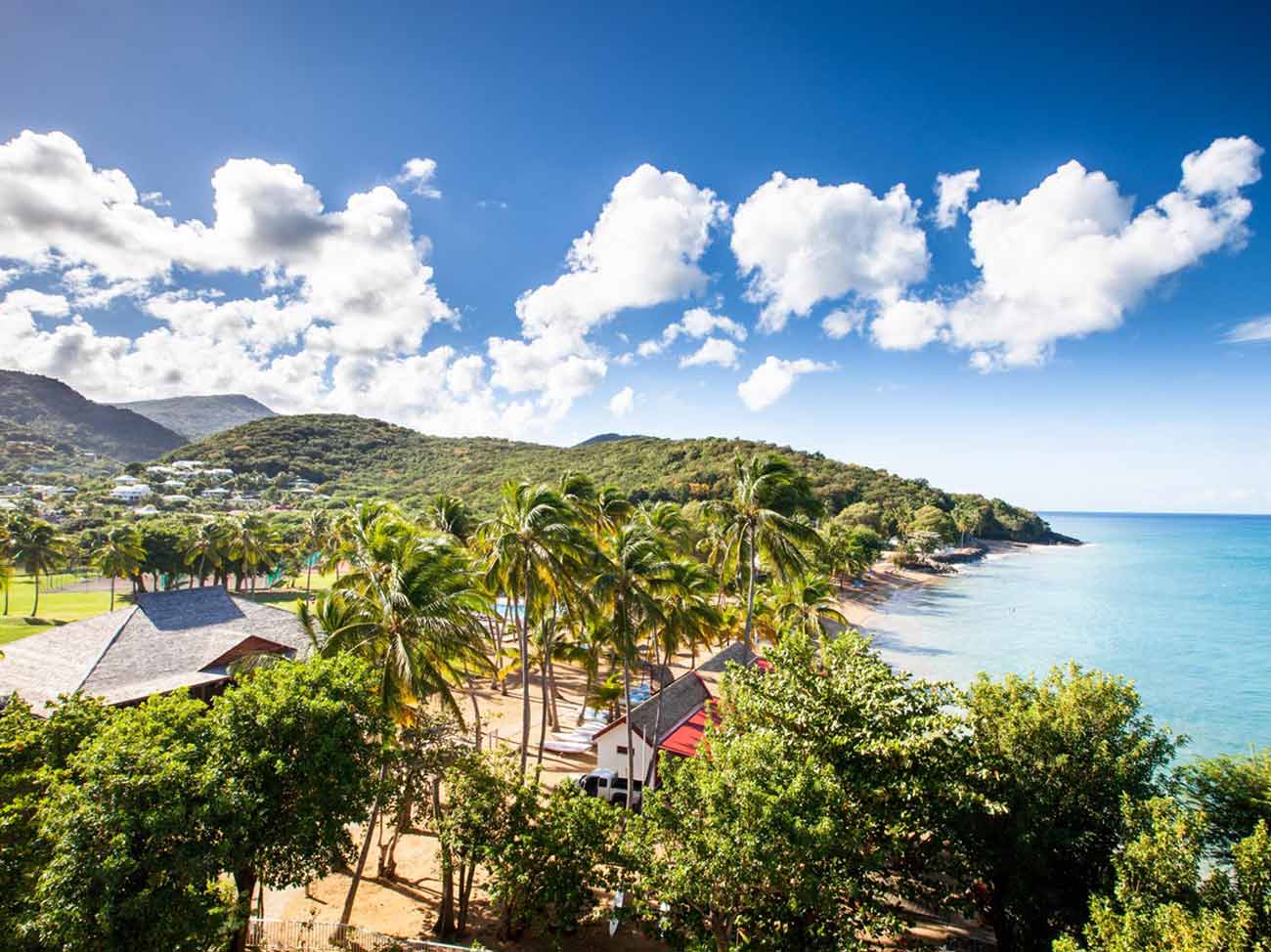
My first impression of the Guadeloupe Islands was something like: "Oh my... this place is so green and amazing. Hey everyone, look how green and amazing this is!" My second impression was that everyone on the two main islands, Grande-Terre and Basse-Terre, drives like they are vying for pole position at an upcoming F1 race.
However, I'm not saying they're bad drivers. Anything but. I was caught off guard by how well my drivers navigated the crowded highways and made it feel like we were never really stuck in traffic, even when we occasionally were. I mention this because we were informed upon arrival at the airport that all car rental companies operate here, and I immediately pictured the highway scene from Clueless .
I do not recommend first- or even second-time visitors renting a car. More confident drivers might ignore this advice, but I cut my teeth on I-95 in Miami, and I will gladly cede all driving responsibilities to the professionals.
When you're out of the cars and vans, everything else runs at the speed of life, maybe even a little slower. There are fast food restaurants on the Guadeloupe Islands, so if getting in and out and moving on to the next adventure is your priority, then grab a Grand McFarmer and a Mars McFlurry from McDonald's and be on your way. But when you're dining at an oceanside spot—especially one that is crowded, in a smaller town, or both—sit back, order a Ti' Punch or two, and chillax.
I'm not saying food service is slow or servers ignore customers. Things just take a little longer. Honestly, I'm glad this was the case, because these islands offer views for days and there wasn't a TV in sight. Embrace the way time seems to stop, and this will feel like heaven.
Bring a Healthy Appetite
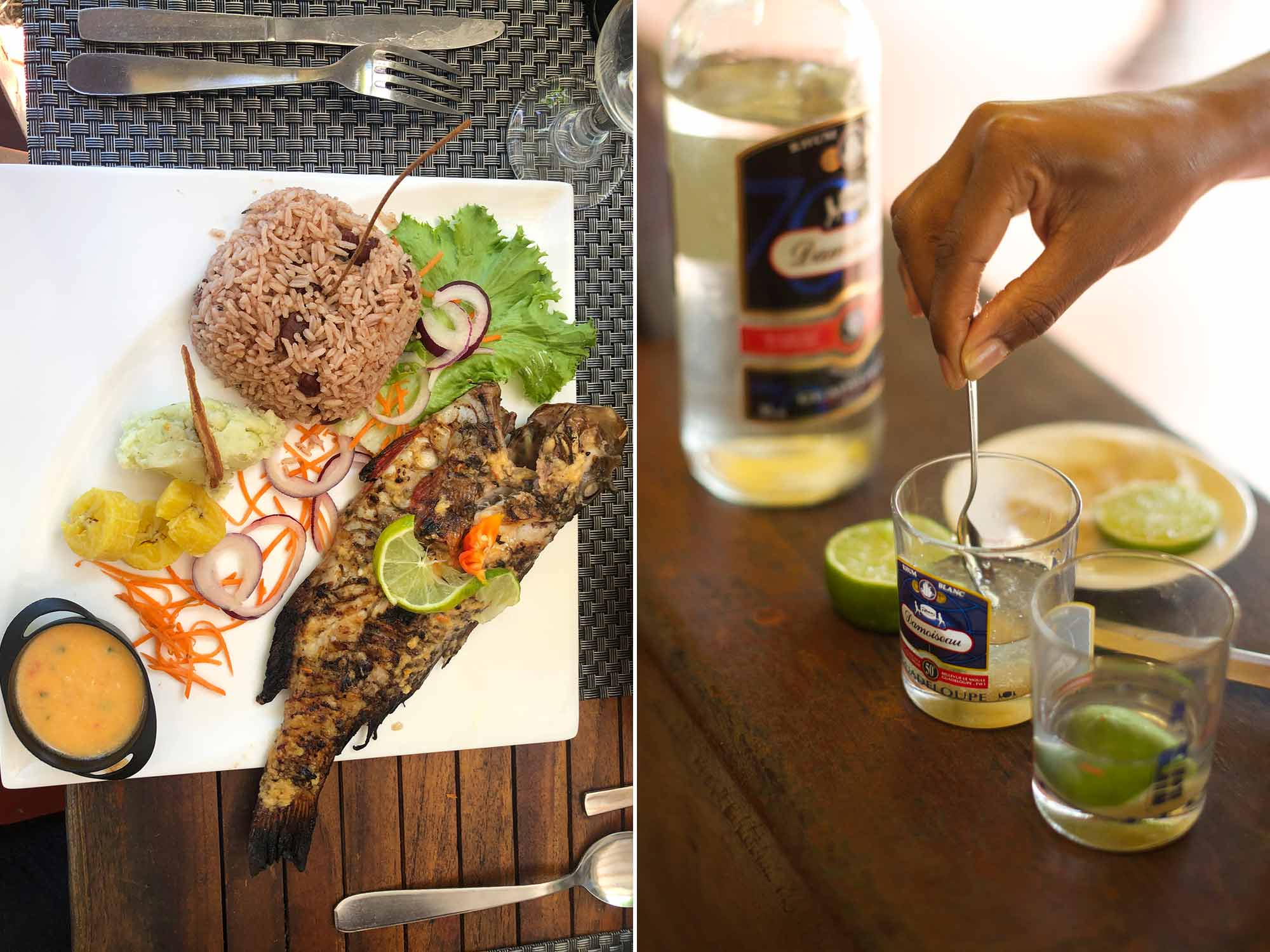
Even if you're in a hurry and McDonald's is the best option for keeping to your itinerary, I implore you to stop and reconsider more time for eating. The way so many of the local restaurants blend French, Creole and Caribbean flavors is nothing short of wizardry, and not one hour has gone by since my return that I don't think about when I'll have Chicken Colombo again.
And don't just make time for better food; try something new. I'm not much of a soup guy, but I challenged myself to try three different bowls at An Chodye La in Pointe-à-Pitre, and now I won't stop talking about the white bean soup. Every fish dish I ate was among the freshest I've ever had in my life, and if it weren't for a pesky shellfish allergy I would have been grabbing lobsters from the ocean with my bare hands (I'm not recommending you do that, because it might be frowned upon).
I don't even normally have red meat for lunch, what with my desire to be awake in the daytime, but the beefsteak served at Ti Bo Doudou in Terre-de-Haut was fantastic and well worth the sleepiness.
From the resorts to the tiny buildings that look like someone's living room, the Guadeloupe Islands boast incredible culinary treats for visitors both brave and picky. It'd be a shame to leave without trying most of them.
Get Your Hands Dirty
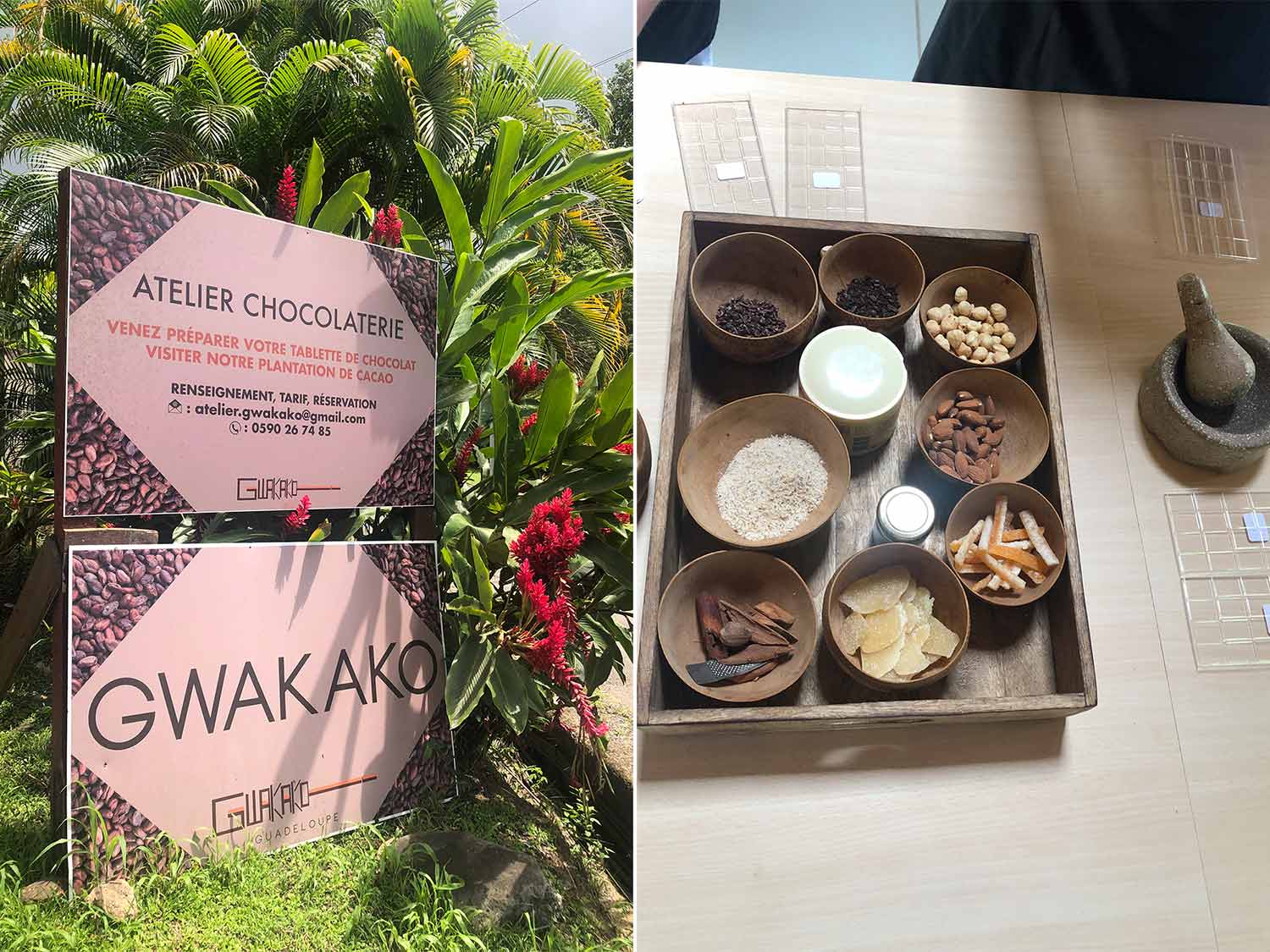
Sticking with my mantra of trying something new, the greatest strength of the Guadeloupe Islands is variety. This goes for everything from food to accommodations, but more than anything it reflects activities and adventures.
If you simply want a gorgeous beach or a cascading pool with views that seem like they were pulled from your iMac's default screensaver, that's fine. Head to Grand Anse beach on Basse-Terre (or the beach of the same name on Terre-de-Bas), Plage Du Souffleur on Grande-Terre, or the pool at La Toubana and your vacation will be made. But just know that there is so much more to enjoy on these incredible islands.
For example, I have never thought about visiting a cacao plantation and making my own chocolate bars, but when I learned that this was offered at Gwakako in Pointe-Noire, I couldn't wait to try. The same can be said for horseback riding, which I hadn't tried since childhood, but I was told that some of the best views of Basse-Terre were only accessible on horseback, and so it was off to Ranch de Moreau to see if that was true. (Spoiler alert: It was!)
Best of all, there's so much left for me to do on the next trip to the Guadeloupe Islands, and that desire to return again and again is really the best gift this glorious destination offers.
Recommended
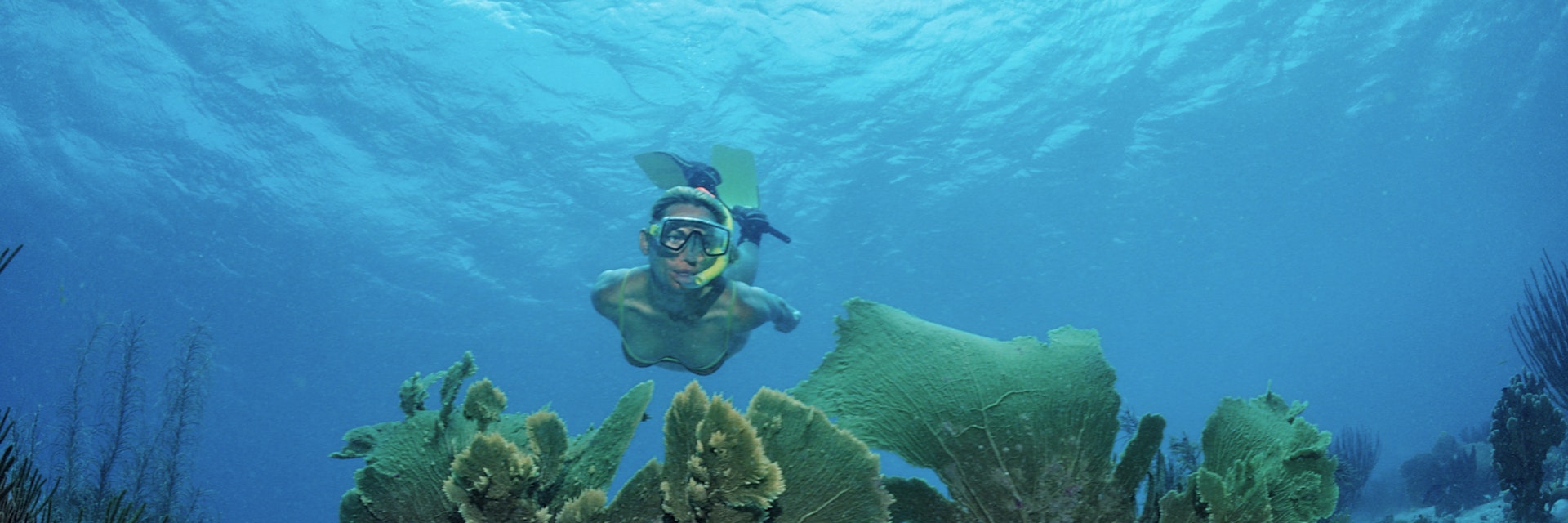
Getty Images/WaterFrame RM
An archipelago of over a dozen sun-kissed islands, Guadeloupe is a varied place to holiday, with everything from deserted beaches to jungle-wreathed mountains. The country's two main islands look like the wings of a butterfly and are joined together by just a couple of bridges and a mangrove swamp. Grande-Terre, the eastern of the two islands, has a string of beach towns that offer visitors world-class stretches of sand to laze on and plenty of activities. Mountainous Basse-Terre, the western island, is home to thick, lush Parc National de la Guadeloupe, replete with waterfalls and topped by the spectacular La Soufrière volcano.
Attractions
Must-see attractions.
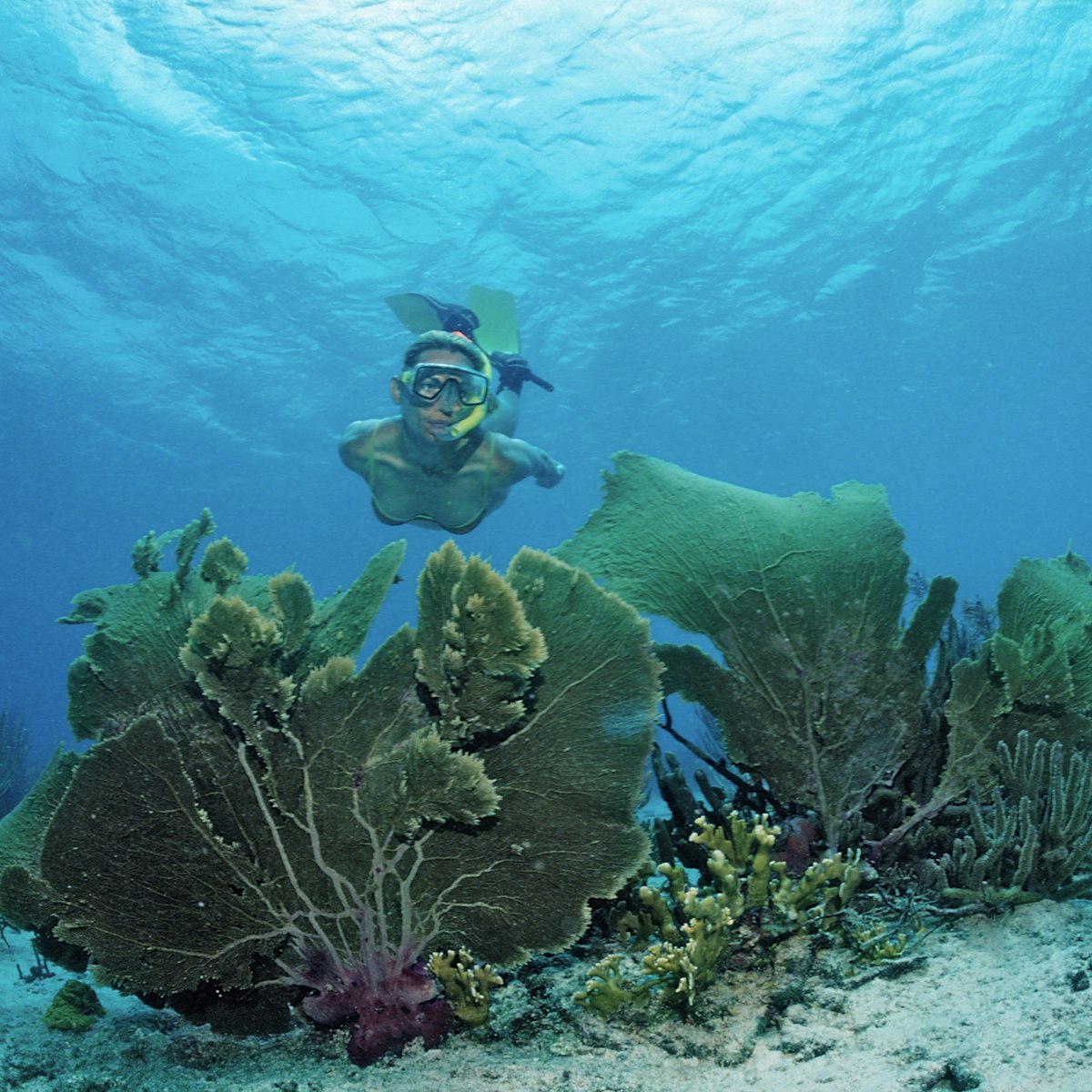
Réserve Cousteau
Basse-Terre Island
Jacques Cousteau brought Pigeon Island to international attention by declaring it to be one of the world’s top dive areas, and the waters surrounding the…

Mémorial ACTe
Pointe-à-Pitre
Top billing in the French Antilles goes to this huge museum of slavery, opened by President Hollande in 2015. Housed in a spectacular silver-latticework…

Maison du Cacao
One of Basse-Terre's most enjoyable attractions, the Maison du Cacao is for anyone who loves their chocolate. Presentations in English take place at 10am,…

Zoo de Guadeloupe
One of Guadeloupe's must-sees, this excellent zoo, high in the mountains of Basse-Terre, combines animal enclosures with a jungle adventure. Follow the…

Plage de la Caravelle
Grande-Terre
This headland of white sand about 2km west of Ste-Anne's center is one of Guadeloupe's very finest beaches – it's the Caribbean you probably came to see…

Grande Anse
This superb golden-sand beach with no hotel development in sight is just 2km north of Deshaies. This is one of Basse-Terre's longest and prettiest…

Grand Cul-de-Sac Marin
This Unesco Biosphere Reserve just off the coast of Basse-Terre makes for an enjoyable day trip. A chain of coral islets sitting atop a 25km-long coral…

Baie de Pompierre
Terre-de-Haut
The horseshoe-shaped Baie de Pompierre is perhaps Terre-de-Haut's loveliest beach: a reef-protected golden strand with a splendid setting. There are even…
Latest stories from Guadeloupe
Filter by interest:
- All Interests
- Adventure Travel
- Art & Culture
- Beaches, Coasts & Islands
- Food & Drink
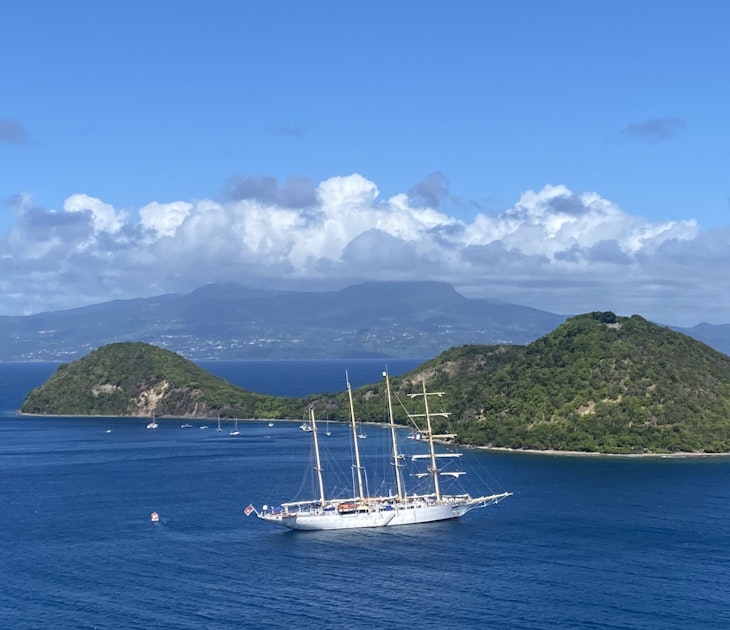
Dec 11, 2023 • 5 min read
Swimming, hiking, dancing and feeding lorikeets all over this Caribbean island.
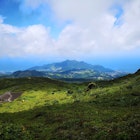
Dec 11, 2018 • 5 min read
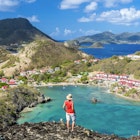
Aug 29, 2017 • 6 min read
in partnership with getyourguide
Book popular activities in Guadeloupe
Purchase our award-winning guidebooks.
Get to the heart of Guadeloupe with one of our in-depth, award-winning guidebooks, covering maps, itineraries, and expert guidance.
Guadeloupe and beyond
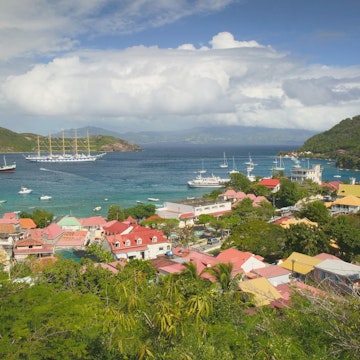

Guadeloupe Travel Guide
Looking for an in-depth Guadeloupe travel guide ?
Then you’re in the right place!
Guadeloupe is considered one of the hidden gems of the Caribbean. While this French overseas territory has gained popularity in recent years, it has benefited from being a lesser known vacation spot. The culture of the islands is well-preserved, as is its incredible ecology.
When it comes to Caribbean travel , the islands of Guadeloupe are home to some of the most beautiful beaches in the region. You’ll find many different types of beaches on the islands, from picturesque white-sand shores to mud-filled swimming holes that are great for your skin.
Beyond the beach, Guadeloupe has so much nature to explore. At Guadeloupe National Park you’ll find beautiful waterfalls, miles of hiking trails , and La Grande Soufrière Volcano, an active volcano with natural hot springs.
Guadeloupe has been under French rule since the 1600s, when French settlers colonized the islands to cash in on the booming demand for sugar cane. The effects of the sugar plantation economy are still visible today, as most of the islands’ citizens are descendants of enslaved people and indentured servants from Africa and India.
The Memorial ACTe cultural center in Pointe-à-Pitre preserves the memories of those enslaved people as well as the repercussions of the slave trade throughout the Americas. The museum, built on the site of a former sugar factory, is absolutely worth a visit.
The islands’ blend of Creole, French, Indian and African cultures makes for lively and exciting music, festivals, and cuisine. Street eats like bokit and accras are an absolute must while in Guadeloupe.
Keep reading for some serious travel inspiration and to dive into resources that will help you with planning a trip to Guadeloupe in the Caribbean. Traveling alone? Also note that the destination is a top pick for solo travel in the Caribbean .
Note that this travel guide to Guadeloupe contains affiliate links to trusted partners!

What would you add to this Guadeloupe travel guide?
Guadeloupe map.
Use this Guadeloupe travel map to begin planning your trip!
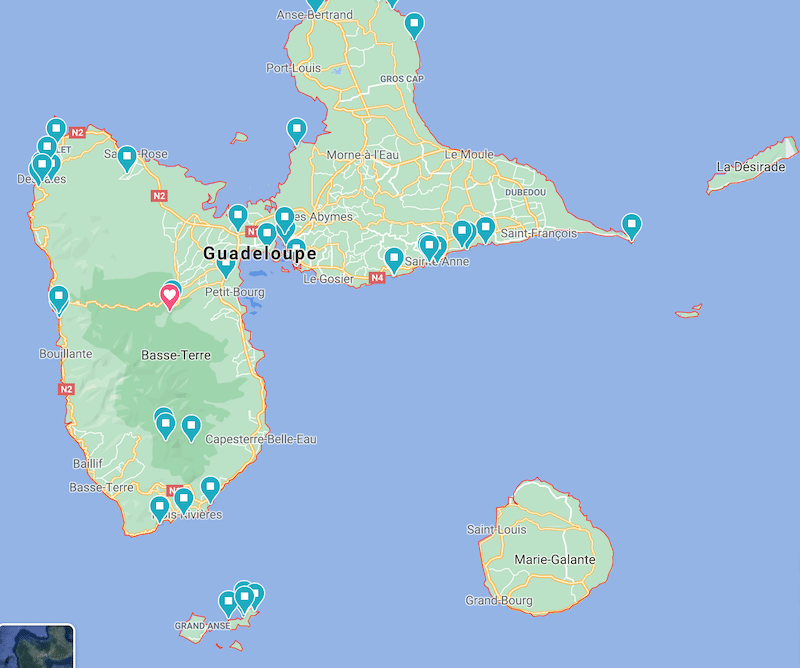
Click here for an interactive version of the above map.
Guadeloupe Things To Do
Plan your Guadeloupe itinerary using the following guides.

Driving Around Guadeloupe: Travel Guide + Itinerary
Caribbean Travel Tips
Make your Caribbean vacation even more memorable with the help of the following travel guides!

13 Best Caribbean Islands For Solo Travel (+ Tips!)

3 Best Luxury Caribbean Wellness Retreats & Resorts
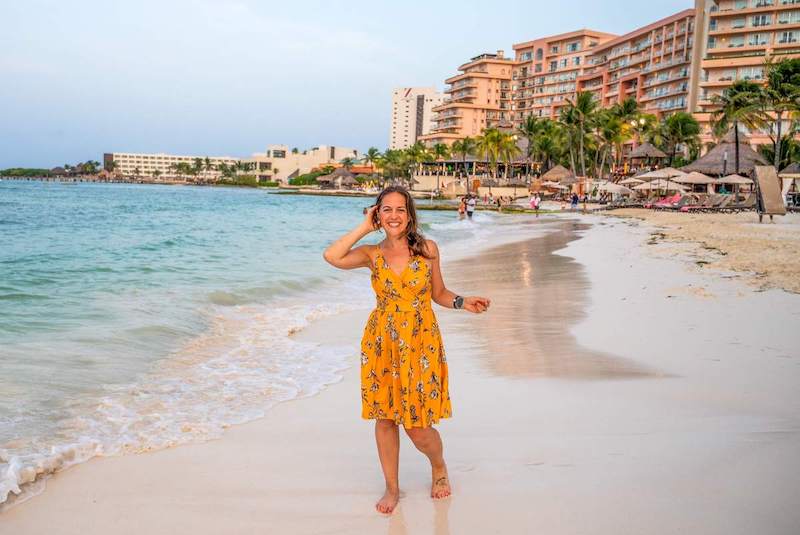
20 Best Beach Destinations For Solo Female Travelers
Top Guadeloupe Tours
Book a Guadeloupe tour and get to know the culture through a local.
- Sailing and Snorkeling Day Tour to Les Saintes from Saint Charles
- Guided Guadeloupe Kayak Excursion from Morne-A-l’Eau
- Sunset Cruise in Deshaies
- Flight Over Guadeloupe In Autogyro from Saint-Francois
- Small Day Cruise from Les Abymes
- Diving In Cousteau Reserve from Bouillante Guadeloupe FWI
Guadeloupe Hotels
Click here to browse hotels in Guadeloupe!
Prefer self-contained stays?
Click here to check out unique local rentals!
You can also use this map to search for local stays:
Guadeloupe Travel Insurance
It doesn’t matter if you’re traveling solo or with a group on a Guadeloupe tour. When visiting Guadeloupe — or any other country in the world — make sure to get travel insurance to protect your health and safety.
In my opinion, the best travel medical insurance for travelers is SafetyWing as they’ve got a large network and offer both short-term and long-term coverage — including coverage if you’re traveling for months as well as limited coverage in your home country).
Additionally, SafetyWing is budget-friendly and offers $250,000 worth of coverage with just one low overall deductible of $250.
With coverage, you’ll have peace of mind as you embark on your Guadeloupe itinerary.
Click my referral link here to price out travel insurance for your trip in just a few clicks .
Renting A Car In Guadeloupe
Renting a car in Guadeloupe?
Use Discover Cars to quickly compare your car rental options.
Guadeloupe Travel Guide FAQ
Below, find answers to frequently asked questions about traveling to Guadeloupe .
Q: What islands are included in the Guadeloupe archipelago?
The Guadeloupe archipelago is a French Caribbean destination featuring six inhabited islands, including Basse-Terre and Grande-Terre — the main islands that tourists spend time on — as well as Marie-Galante, La Désirade, and the Îles des Saintes.
Q: What do I need to know before going to Guadeloupe?
As a French overseas region, French is the official language of Guadeloupe. Unlike many Caribbean countries, though, you won’t find many English speakers outside of the tourism industry. Try to learn a little bit of French before you leave, particularly if you are planning to venture out into the town. Even just a few phrases will help you get by.
There are two main seasons in Guadeloupe – dry (December through May) and rainy (June through November). Though the weather is fairly temperate year round, the dry season is the best time to visit as the rainy season puts Guadeloupe in the path of tropical storms and hurricanes.
Insect repellent is a must when visiting Guadeloupe, particularly at night, as the humid air attracts mosquitos.
Q: Can you drink the tap water in Guadeloupe?
While the tap water on the islands is potable, those with more sensitive stomachs may want to stick to bottled water during their trips. And be sure to clean off the skin of fruits, particularly coconuts, before eating them.
Q: Is Guadeloupe expensive to visit?
Guadeloupe falls somewhere in the middle of the cost-per-day spectrum when compared to other Caribbean destinations . The average traveler to Guadeloupe should budget about $235 USD per day to cover expenses like accommodations, ground transportation, food, and more.
This cost will go up or down depending on your travel style and there are accommodation options to fit any budget.
Round-trip airfare costs will depend on your departure city, but you can find fairly inexpensive non-stop flights from Northeastern US cities like New York and Boston.
Q: If I want to explore traditional cuisine, what Guadeloupe food should I try?
Influenced by Creole flavors, traditional French cooking and Caribbean favorites, Guadeloupe’s traditional cuisine is definitely worth a try.
Street food fans should grab a bokit , a cornmeal flatbread sandwich stuffed with meats and cheeses. Accras , or spicy fried fish fritters, are a staple of Caribbean cuisine and easy to find on the streets of Guadeloupe. And of course, you’ll want to try some of the island’s fresh fruit and seafood, available in both food stands and high-end restaurants!
Q: What are some top Guadeloupe tourist attractions?
Guadeloupe’s top attraction is its nature! As an archipelago, the islands are home to many mountains and volcanos like La Grande Soufriere for hikers to explore. Basse-Terre’s Guadeloupe National Park , designated a UNESCO World Biosphere Reserve, houses over 100 species of orchids as well as gorgeous jungle waterfalls and unique wildlife. And of course, the beaches of Plage de Grande-Anse and Plage du Souffleur are a huge draw to tourists from around the world.
Those looking to learn more about Guadeloupe’s history and culture should head to the city of Pointe-à-Pitre. Here you’ll find the Memorial ACTe , a cultural center and museum dedicated to the dark history of the slave trade. Beyond the museum, walk through the city to check out the historic French architecture, traditional Creole houses, and lively markets.
There are also many opportunities to experience traditional Creole music and dance throughout the islands.
Q: Do you need a visa to travel to Guadeloupe?
Citizens of the United States, Canada, the United Kingdom, and many other countries do not need a visa to travel to Guadeloupe. Check with the French consulate in your home country for full information on travel requirements.
It’s recommended to view your country’s Guadeloupe International Travel Information page for the most up-to-date information on entry and exit requirements. You can also contact the Embassy of France.
Q: What is the best time to visit Guadeloupe?
For warm and dry weather the best time to visit Guadeloupe is December to May.
Q: Are credit cards accepted in Guadeloupe?
Major credit cards, particularly Mastercard and Visa, are accepted around Guadeloupe, though it’s recommended to carry some cash for making purchases from smaller restaurants and street stalls.
Q: Where is the Guadeloupe international airport?
Guadeloupe’s international airport is Pointe-à-Pitre International Airport, located in Pointe-à-Pitre on the island of Grande-Terre.
Q: What is the local currency in Guadeloupe?
The local currency in Guadeloupe is the Euro (€).
Q: Do people in Guadeloupe speak English?
As Guadeloupe is an overseas region of France in the Caribbean the official language is French, though some locals do speak English.
Still, you’ll have the opportunity to learn a language while traveling .

Enjoyed this guide to Guadeloupe travel? Pin it for later!


Guadeloupe Travel: complete & practical Ultimate Guide
- June 3, 2019
- Categories: Caribbean , Guadeloupe , Travel guides
Click and share this article:
Living in the Caribbean was my dream for a while. I fulfilled it in 2018 when I was living in Guadeloupe for the whole month. I had enough time to visit the whole island and to try different Guadeloupe attractions it had to offer.
In this ultimate Guadeloupe travel guide , you will find the most important facts about the island, recommendations how to get there, where to stay, and information about the costs, food, transport, attractions, weather, Guadeloupe travel tips and many others.
Table of contents:
- Best things to do in Guadeloupe
- What to experience in Guadeloupe?
How to get to Guadeloupe?
- Where to stay in Guadeloupe?
Visa regulations
Costs, currency and payments, how to get around in guadeloupe, what to eat in guadeloupe.
- Phone and Internet
- Weather in Guadeloupe: when is the best time to travel?
- What to wear in Guadeloupe?
- Souvenirs from Guadeloupe
- Interesting facts about the Guadeloupe
Pros to travel in Guadeloupe
Cons to travel in guadeloupe.
- Guadeloupe Travel: conclusion
Geography: Guadeloupe
Guadeloupe is an island located in the Lesser Antilles, in the Caribbean . From the administrative point of view, this island forms an integral part of France and is considered as one of the French overseas departments. Because of this fact, the island is also a part of the European Union .
Read more: Wanna visit the French Antilles but you don’t know which island to choose? Check out my tips on differences between Guadeloupe and Martinique.
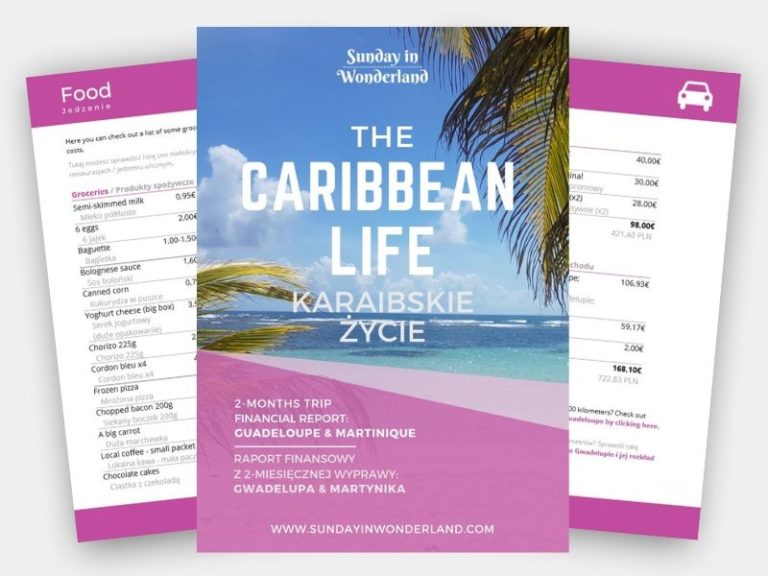
Wanna know the complete costs of traveling to
the Caribbean?
Grab my free financial report!
You can unsubscribe anytime. The administrator of your personal data will be Dominika Byś. The detailed information about the processing of personal data can be found in privacy policy .
Subscription consent
Now check your inbox and confirm your email. Remember to check out the SPAM folder as well.
Guadeloupe itself consists of two islands lying so close to each other, that they are often considered as one land. Their names are Grande-Terre and Basse-Terre , where a capital – the city of Basse-Terre – is located. Besides those two, a few smaller islands belong to Guadeloupe’s region: La Désirade, Marie-Galante, Petite-Terre, and Les Saintes.
On the interactive map below, you can check where Guadeloupe is located. You can save this map in your Google Maps as a cheat sheet with the best attractions in Guadeloupe and beaches in Guadeloupe , which I describe further in this post.
Guadeloupe travel guide: best things to do in Guadeloupe
To well begin the travel guide to Guadeloupe, I give you a list of the most popular places to visit in Guadeloupe and the most awesome things to do in Guadeloupe.
Most of them are natural Guadeloupe attractions with diverse hiking trails. But some are also museums and similar places where you can discover the beauty of Guadeloupe and its culture.
Read more: 9 best things to do in Guadeloupe!
The Volcano La Soufrière
La Soufrière Volcano is one of the most popular attractions for active tourists, so it is a fixed point of every Guadeloupe guide. It is also the highest peak of the Lesser Antilles.
Even if the main trail – called “The Ladies Trail” – is marked as “difficult”, even children will be able to achieve it. The views from the volcano side are so amazing that you will not regret hours spent on climbing.
Read more: How to climb the volcano La Soufrière?
Deshaies Botanical Garden
This colorful place is one that enchanted me the most in the Guadeloupian map.
Botanical Garden in Deshaies is a huge park filled with scents, colors, and noises. It is also a must-see place on the island.
There, you will be able to discover the diversity of exotic plants and greenery from different corners of the world. And you will spend some nice moments with charming inhabitants of the garden: parrots, Koi carps and goats.
Read more: All the wonders of Deshaies Botanical Garden.
Carbet Waterfalls
Sailors are able to observe two of those amazing waterfalls from the sea. Each of Carbet Falls has more than 100 meters.
A trail leading to the second fall is well preserved and easily accessible. It creates a nice trip opportunity for families traveling with children. The first fall, in the opposite, requires better condition and climbing skills. So it will be a great adventure for those who are more adventurous.
Read more: How we strayed from the trail while going to Carbet Falls.
Pointe des Chateaux
Pointes des Chateaux is the most Eastern part of the island. I have spent there a whole day wandering on a beautiful and diverse trail, leading on the cliff shore, beaches, and through a forest. The path is not so demanding, meanwhile, the trail is a great attraction for landscape lovers.
Read more: A whole day long trip to Pointe des Chateaux on Guadeloupe.
Mémorial ACTe and Pointe-à-Pitre center
If you would like to dive into Guadeloupe’s history, the must-visit place is Mémorial ACTe , which is dedicated to the Memory and History of Slavery Trade. During centuries the island population was increasing mainly because of the people forced to move to Guadeloupe to become slaves. Mémorial ACTe is a modern museum with a well-designed exhibition about the world slavery issue.
While visiting Mémorial ACTe I also recommend wandering in the center of Pointe-à-Pitre , which is the biggest city in Guadeloupe. Meanwhile, the city itself is not the prettiest one, I found there some old-time architecture that still remembers the colonial centuries.
Read more: The visit in Mémorial ACTe and things to do in Pointe-à-Pitre.
Coffee Museum
Caribbean islands have perfect conditions to grow coffee, a daily must-have for lots of people. A humid climate, a lot of sun , all of these make coffee grows. The beans are dried in a traditional way and you can taste them in a delicious Guadeloupian coffee like Café Chaulet.
I recommend visiting the Coffee Museum (fr. Le Musée du Café ), which is located near Basse-Terre city. There you can discover the whole process of coffee production and lots of interesting facts about this fascinating drink.
Read more: The aromatic trip to the Coffee Museum in Guadeloupe.
Maison du Cacao
Another educative trip for your senses. Cocoa also likes Guadeloupian climate, so on the island, you can find a lot of cocoa trees.
On site, there is also chocolate made locally which recipe was created in 1911 and didn’t change from that time. Chocolat Elot has an unusual taste of cane sugar, which makes it a delicious snack. The history of the chocolate on the island you can discover in Maison du Cacao which is located on the Western shore.
What is your first thought about the Caribbean? White sand? Nah. Warm water. Noo. Rhum? Oh yes, give me more!
Sugar cane grows all around the island. So in Guadeloupe, you can find a few famous distilleries, like Bologne, Longueteau, Bellevue or Montebello. Rhum is a base for many other local drinks, like Ti’Punch. So visiting one of Guadeloupian distilleries is highly recommended.
Porte d’Enfer and Pointe de La Grande-Vigie
Guadeloupe does not only mean beautiful beaches covered with white sand. I was surprised how stunning cliffs I found there.
Next to Pointe des Chateaux, there are some other spots on trekking list. Porte d’Enfer (eng. Hell’s Gate ) and Pointe de La Grande-Vigie are wonderful places which you can find on the North of Grande-Terre Region. Porte d’Enfer is actually a grotto, which is thrilling deep. From its edge, you can get only a sneak peek which really gives you an impression of looking into hell’s gorge.
Read more: A trekking to Porte d’Enfer during a 4-days road trip.
Costumes and Traditions Museum
This small family museum, located in Gosier, will be a nice spot for people willing to know more about the everyday life of Creoles living in Guadeloupe.
Well-preserved costumes and household items will tell you the story of the island’s traditions and old habits. In this museum , you will find all of the answers about how the life of people looked like in Guadeloupe years ago.
What else to experience in Guadeloupe?
Any Guadeloupe travel blog mentions places I listed below. But on the island, we will find much more valuable experiences to enjoy.
Chill on a beach and pick up coconuts
Let’s be honest: relax on the beach is one of the fixed elements of traveling to the Caribbean. This travel guide to Guadeloupe will not be completed without a short list of beautiful beaches to visit.
My very favorite was Plage de La Caravelle , next to Sainte-Anne city. I was living near to it while spending the whole month in Guadeloupe. Morning calm sunrises and joyful afternoons spent there were making me feel warm inside. The beach is located near a big hotel, so it’s clean and filled with attractions like kitesurfing, paddling, and kayaking.
The city beach in Sainte-Anne is also a wonderful spot. You can meet there locals having BBQ in palm trees’ shadow and active people having aqua-aerobic classes in water. You can also enjoy local restaurants next to the beach.
If you want to make a lovely selfie with a charming island in background, go to La Datcha beach. It is located in Gosier city. Maybe it is not the biggest one, but views are surely worth a stop.
Some other beaches worth your time are Bois Jolan, Grande Anse, Petit Havre, Plage du Souffleur and Raisins Clairs.
Buy fresh fruits on a market
Almost every city on the island has its own local market in a center. There you can find mountains of fresh local fruits and vegetables. Delicious bananas, pineapples, watermelons, and coconuts will definitely catch your eyes. The market is always easy to find, filled with scents and colors.
Interact with wildlife
Even if in Guadeloupe you will not meet any truly wild animals which could increase your adrenaline’s level, there are still some creatures that you will meet. Colorful fish and turtles swimming in the water. Huge iguanas hanging out on a beach. Hummind birds flying in a garden. And small, cute anolis lizards stealing bananas from your breakfast table.
Basin in a jungle
Guadeloupian jungle hides plenty of wonderful gems for us. Ones of my favorite were refreshing basins just below the waterfalls. Their water is much colder than in a sea, so swimming in them gives a huge relief after mountain trekking. Ones of the most popular basins are Le Bassin Paradise , Cascade aux Ecrevisses and Cascade Acomat .
Island hopping
Since Guadeloupe is not only the mainland of Basse-Terre and Grande-Terre but also few smaller islands, very popular are daily boat excursions. In every touristic city, you will find stands proposing sailing or motorboat trips, where you can enjoy sightseeing, snorkeling, diving, or even whale and dolphin watching.
Snorkeling and diving
Around Guadeloupe, you can enjoy the coral reef. You can do some snorkeling even near the beach. The best places to snorkel on the mainland are Malendure , Plage du Souffleur , and Petite Anse . The most popular smaller island for snorkeling is Petite-Terre .
Route de La Traversée
While traveling in Basse-Terre by car, your GPS probably will lead you around the island. But instead, you can take the Route de La Traversée , which goes through the middle of the region, among the greenery of a jungle. It is not long, but worth to take if you would like to watch some jungle without hitting the trail.
Read more: Do you need a bit more inspiration? Check out my very favorite inspiring travel quotes!
In this part of the Guadeloupe travel guide, I will give you some tips about how to arrive at the island. Getting to Guadeloupe is easy when you are coming from continental Europe. There are many direct flights from Paris and few other cities. The airlines which operate this direction are for example LEVEL, Air France or Norwegian.
How to find cheap flight tickets to Guadeloupe?
Here is the way I did it : first, go to Skyscanner website by clicking here . Choose your desired airports. Then, in fields “Depart” and “Return”, instead of “specific date” click on “whole month”. And search for flights! This way you will be able to see the whole calendar with the best prices .
Then simply choose the one that satisfies you. Et voilà! This is how you can find cheap flights to Guadeloupe. Once you found your best price, click “select” and you will be redirected to the airline’s website so you can purchase your tickets to paradise.
Travel guide: where to stay in Guadeloupe?
Guadeloupe offers a lot of attractions, mostly natural, like beaches which you can enjoy almost everywhere. Most of the cities are really similar. So choosing one of them to live in shouldn’t be a big deal. I propose to look for a city with a nice beach, so you can enjoy it at any time.
I was living in Sainte-Anne which enchanted me. It was a small city but had everything that traveler needed: grocery shops, restaurants, pharmacies, post, and a beautiful beach. It also had nice bus connections with other cities.
Another place that I can recommend is Saint-François . I have been there several times and it made a good impression on me. It was a bit bigger than Sainte-Anne and had marina and golf course. Plus some nice beaches like Raisins Clairs.
Read more: My choice of the most stunning hotels in Guadeloupe for any budget
To be honest in this Guadeloupe travel guide I do not recommend staying in Pointe-à-Pitre. It is the biggest city of the islands and the economic center. But it is mostly built up with blockhouses, offices, etc. So if you would like to relax near nature, you can simply avoid choosing it while looking for the accommodation.
How to find accommodation?
Guadeloupe proposes plenty of accommodation options. The most obvious solution is, of course, finding a hotel. On websites like Booking.com you can find a lot of places to stay on the island. If you’ll take a look on the map below, you will see places that you can choose from on this website. Click on it to see more information (if you cannot see the map, try to switch of the ads blocker plugin in your browser).
Booking.com is usually the first place where I go to find accommodation . I can estimate the most popular locations there and check the prices range.
You can also take a look on my list of marvelous hotels in Guadeloupe that I found and would love to book on the next trip to the islands! I made this reasearch for any type of travelers: from backpackers, through families and couples, and ending with luxury travel.
Anther platform where I go to find a place to stay in is usually Airbnb. I can really recommend using it because it has some major features. The main is that you can rent a room or a whole apartment from a local living person. Thanks to this you will have an opportunity to receive the best information about the place where you travel, like bits of advice where to eat, how the local public transport work, or if there are any important things that you should know about the place.
Airbnb is also great when you book a longer stay. Sometimes, you can reach up even to 50% off discount for your booking! We had this situation while visiting Martinique and booked an apartment for the whole month.
If you are not a member of Airbnb community yet, then I’ve got something special for you. With the link below you will receive a 23€ discount for your first booking! Nice, right?
Go more local with your accommodation
People living in Guadeloupe very often promote their businesses offline . It means, that you can be able to find a pretty nice accommodation offer while being already in place. If you are planning a longer stay it might be a good idea to book a hotel or Airbnb for a few first nights, and then look for some other place directly in your destination. You can also try to find a nice apartment for rent in leboncoin . It is a French website with adverts from local people – including accommodation rentals.
Finally, if you are not coming for so long, you can always try to find a couch to sleep on via Couchsurfing . I love this initiative of sharing someplace to sleep in your house with other travelers. And I used this opportunity when I was coming back from my Guadeloupian trip – I stayed 3 days in Paris, with a very kind and knowledgeable host. In Guadeloupe, there are not so many hosts than in Paris, but you can always try this way of finding accommodation before booking a hotel.
Formal restrictions to get to Guadeloupe are relatively easy. Since the island is the French overseas department while landing there you will be treated the same way like entering the France territory (however, Guadeloupe is not a part of Schengen Area). That means, that if you are a European Union’s citizen, the only thing you will need is your ID card . You will be able to do both: work and travel Guadeloupe. I highly recommend taking also your passport with you, just in case. But personally, I showed only my ID card on the airport and ferry terminal and it was sufficient to travel. There is no visa, so actually, you can stay on the island as long as you want to.
Since Guadeloupe is a part of France, the currency there is euro (EUR, €). On the island, we found a few banks popular in continental France, like LCL or La Banque Postale. ATMs are available in most of the cities and we did not have any problems with using it.
In grocery shops, we usually used our cards to pay. But it is a good habit to have some cash with you because some shops had a rule that payments with bank cards start at the minimum amount of 5€ or 8€. When you see a paper note on a cash desk with “CB 5€” that means that card payments are available from 5€ (CB means carte bancaire , fr. bank card). On city markets, we usually could pay only with cash, the same for bus tickets.
We were using mostly Visa and it worked pretty well. I also recommend thinking about ordering a Revolut card . It is a great alternative for bank cards, where you can exchange your currency in just a few seconds via an app.
Click here and ready my Revolut review!
Guadeloupe is not the cheapest place. Before my 2-months trip to the Caribbean, I needed to save a lot of money to can afford it. But it was worth that money. After this trip, I prepared a detailed financial report which includes all of my costs: flight tickets, accommodation, food, sightseeing, transport and more (like food prices). You can download this extension of the Guadeloupe travel guide by clicking below.
To use this travel guide to Guadeloupe in the most practical way, you will need transportation. In order to reach all the best places to visit in Guadeloupe you can use a few different possibilities.
Next to a taxi, the most common public transport in Guadeloupe is a bus . In Grande-Terre, there operates a modern bus company – Karu’lis . Their line S1 operates from Pointe-à-Pitre through Gosier and Sainte-Anne til Saint-François. They also have some buses coursing between Pointe-à-Pitre and the airport. But remember that buses course only during the day.
The rest of the island is operated by buses which do not have any fixed schedule. Most of them are private, so they run only when a bus driver wants to.
Read more: If you want to know more details about public transport in Guadeloupe read my previous post about it .
Car rental in Guadeloupe
A popular way of transportation for tourists is a car rental in Guadeloupe. There is plenty of companies ready to rent you a car, both local and independent, and big international agencies. While being in Guadeloupe, I rented a small car from a well-known company and it gave me a great possibility to visit all the best spots on the island.
Another interesting option to rent a car in Guadeloupe is Carfully . This platform basically works the same like Airbnb, but for cars. So y ou can rent a car directly from a local person living on the island. This way of car sharing is very popular among local inhabitants and tourists.
Read more: The 4-days road trip with a car rental in Guadeloupe – detailed itinerary with an interactive map.
During the travel in Guadeloupe, you will have an opportunity to taste some Creole kitchen which is mixed with French traditions. Its origin comes from the times when first slaveries were brought to the island from different parts of the world. For that reason, Creole kitchen includes influences from different regions of Africa, Asia, and Europe. Since the island is a French territory, we can also enjoy a fresh baguette each morning or French wine in the evening.
Some of the most popular must-eat in Guadeloupe:
This dish has some Asian influence and is similar to curry. Usually, chicken or goat is marinated in a kind of spicy sauce and served with rice. It can be found in almost every restaurant on the island.
Accras de morue
This one is usually served as a starter. It is usually fish minced with potatoes and vegetables. Small balls are then deep-fried in oil .
A type of sandwich which is very popular in Guadeloupian street food. A white bun is flattened and fried on oil, which makes it very tasty. It is served with a variety of ingredients: chicken, cheese, ham, egg, fish, etc.
You can try langouste in almost every restaurant near a fishing port. Next to gilthead seabream, it is one of the most popular marine dish es which you can try.
This kind of drink you can find everywhere on the island. It is one of the most popular products in the city markets. Ti’punch is an alcohol ic drink which bases on white rum agricole . You can choose from different taste variations, like coconut, goyave , banana, etc.
Read more: 16 examples of the Caribbean food, drinks and sweets that you must try.
Is the water in Guadeloupe safe to drink?
In general, you do not need to worry about drinking tap water in Guadeloupe. It should be safe and free of bacterias. Nevertheless, its taste is not the best. The owner of our apartment in Guadeloupe told us, that we used to drink tap water mixed with lime juice to make the taste better.
Since we try to live more responsible and produce less waste we did not want to buy new plastic bottles each day. So we used a clever trick: each day we were preparing a few liters of red fruit tea and let it cool down. Then we were filling only a few of bottles with this cool drink, which we could take with us for day trips. The tea taste was much better than tap water.
On a daily basis I love to use refillable bottle with a filter . They work great during day trips, but also at home to stay hydrated. Moreover, you can carry this kind of empty bottle through security gates at the airport, and refill it with water before the flight. Awesome way to save some money and plastic!
Health in Guadeloupe
Guadeloupe is an island which is relatively safe if it comes to diseases. While traveling from Europe, only some standard vaccines were recommended. It is good to have vaccine protection against hepatitis B . You can catch this disease when your blood will have contact with non-sterile tools, like needles. The infection might occur in a hospital, or even in a tattoo of hairdresser saloon. Another way to catch hepatitis B is having sexual contact with an infected person. So better stay safe and get vaccinated.
Another recommended vaccine was against hepatitis A , which is also called “a dirty hands disease”. The infection might occur after drinking infected water (or ice cubes) or eating food prepared in infected water. This is the most common type of hepatitis, but you can stay safe when you will get vaccinated.
Tropical fevers
Luckily, during the travel to Guadeloupe, you will see no malaria or yellow fever these days. But you need to remember about the risk of catching other tropical fevers: chikungunya or dengue . Usually, they are not so serious if caught for the first time. You just need to stay in bed, stay hydrated and sweat out the disease. In pharmacy, you can try to ask for some local, natural remedies, that will help you through to beat the fever.
If your immunity system is not too strong, it is more likely for you to catch a tropical fever. For this reason, before coming to Guadeloupe, you should work on increasing your’s organism resistance. The most effective way will be taking a lot of vitamin C, in many other variations. Pills, citrus fruits, pickled cabbage, any of those solutions will be great.
Health insurance
If you are a European Union citizen, it will be good to have a European Health Insurance Card with you. So d epending on the visited country, it will allow you to recover your medical treatment costs when you will be back to your country.
A good habit is also to purchase individual health insurance before a travel to Guadeloupe. I was protected with whole year insurance from Planeta Młodych , which should help me to organize and pay for some eventual medical treatment worldwide.
Even if the island is generally safe, purchasing Guadeloupe travel insurance is definitely worth the money.
Dangers in Guadeloupe
Many tourists ask the question is Guadeloupe safe ? Above all we can assume yes, Guadeloupe is a safe island. Sure, there are some dangers, like everywhere, but in fact, you can treat it as a safe travel destination.
Natural dangers
Number one in this Guadeloupe travel guide goes to natural dangers. There are few, which do not appear too often. The most obvious is a volcano . Usually, it is a tourist attraction, but we still need to remember about the power of the Earth. Other ones are hurricanes . But in fact, hurricanes in the Lesser Antilles usually do not have such a power as when they are already above Florida. So in Guadeloupe, destructions are not so big as elsewhere.
On the island, there not many dangerous animals . There is actually nothing that could eat you – no big wild mammals, like tigers, bears, or even monkeys. But there are some smaller ones, which you should avoid. Like a red lionfish, jellyfish or sea urchin which you can meet while snorkeling. Contact with them can be very painful.
The most annoying animal on the island is a mosquito . Luckily, besides tropical fevers like chikungunya or dengue, they do not transfer many other diseases in Guadeloupe. Nevertheless, it is better to avoid them and use some protection and repellents during travel in Guadeloupe. You should be also aware of local centipedes. They will not make you sick, but they bite really painfully. But do not worry, during my two months in the Caribbean, I have seen only one.
The last dangerous category goes for plants . In the Caribbean islands, there grow a few toxic species. So while trekking in the jungle, you should be aware of a few of them: manchineel (which fruit looks like a small green apple), castor oil plant, jequirity bean. It is good to Google their look and to remember it. Once, on a beach, a local guy told us to move our things a little bit further from a tree, which he said was toxic and was losing leaves at that time. We were so grateful!
Social dangers
And finally, the last danger which goes for… people of course. In general, people on the island are very kind. But, like everywhere, you should be watchful in some places. Our neighbor from Sainte-Anne warned us to not hang around after dusk in Pointe-à-Pitre. He said that sometimes you can meet there some drunk or on high guys, who might be looking for provocation for a street fight. Luckily, we were not in Pointe-à-Pitre after dusk, and luckily we did not see anyone like this nowhere on the island. But it is always good to be open-eyed.
The official language spoken in Guadeloupe is French, in a form that we know from continental France. The second language, which is well-known on the island is Creole. This language is a combination of French, Spanish, Carib, Portuguese and African words. Below you can check out some common Creole expressions, as an addition to this Guadeloupe travel guide:
Welcome – Byen venu Hello / Good morning – Bonjou How are you? – Koman ou ye? Very good – Mwen byen I’m fine – N’ap boule So, so – Kon si , kon sa Long time no see – Sa fè lontan What’s your name? – Koman ou rele ? My name is… – M rele … Where are you from? – Ki kote ou sòti? I’m from… – M’soti… Nice to meet you – Anchante / M’kontan fè konesans ou
Good afternoon – Bon apre-midi Good evening – Bonswa Good night – Bònn nui Have a nice day – Bònn jounen Yes – Wi No – Non Maybe – Petèt Excuse me – Eskize mwen Sorry – Dezole Please – Souple Thank you – Mesi
English-speaking travelers might be disappointed in Guadeloupe. Local people seem to be true French in this case and in general, expect everyone else to speak French. So if you want to travel Guadeloupe, better learn at least a few words in the language of love, or take with you a good dictionary book and online translator.
But do not worry: in some most important touristic places, you can rent an audio guide in English, for instance in Mémorial ACTe or bigger distilleries.
Read more: 7 awesome travel blogs telling about the Caribbean!
The religion in Guadeloupe
Most of the people living in Guadeloupe are Roman Catholics. They are a huge group of 80% of the whole population. The second group, counting only 8% of the population, consists of Evangelical Protestants. The rest of people are members of Seventh-day Adventist Church, Jehovah’s Witnesses, and the mysterious Voodoo.
Phone & Internet
The main phone and Internet suppliers in Guadeloupe are Orange Caraïbe, SFR and Digicel. In most of the towns, you will find a seller points in local shops, where you can purchase a SIM card.
But if you are a European Union citizen, there is some great news for you: Guadeloupe belongs to the first zone of Roaming for most of the European operators. That means, that you can call home with no other fees. You can also use your own Internet package, unfortunately with a gigabyte limit, which is different among Internet providers (you could check it on your Internet provider’s website). During our trip, we used Orange SIM card bought in Poland and roaming worked perfectly. My own SIM card did not have this luck – my Internet provider was Polish Play, and for the first three weeks, it was blocked. Fortunately, after few e-mails, Play’s technicians managed to fix this error.
So if you want to have access to a stable Internet connection, my biggest recommendation is to book accommodation with WiFi . In our case, Wifi in our apartment, and European roaming for an emergency case in the phone, to check the Google map on the road, was sufficient.
Some restaurants on the island offer free WiFi to their guests. In a few cities, you will be also able to connect to a public ZeeWifi , when you need to register only for the first time, and then you can use it in places like Saint-François bus station or the center of Sainte-Anne.
Read more: Internet details in Guadeloupe and our electronical bloopers .
Weather in Guadeloupe: when is the best time to travel the island?
Guadeloupe, laying in the Lesser Antilles, in the Caribbean, has a tropical climate, which is mostly influenced by Trade Winds. There are two main seasons on the island: a wet season (called winter) which lasts from July to December, and a dry season which goes from January to June.
The average temperature during the year is 26°C and it usually does not go under 20°C, so, in my opinion, there is no best time to visit Guadeloupe since there is always warm. I have spent the whole of October in Guadeloupe and I can say that the wet season is not so bad. It was raining almost every day, but only for an hour or two. After the rain, a beautiful sun shows up.
So the biggest advantage of the Guadeloupe travel in the wet season was that beaches were not so crowded . At the beginning of October, a hotel near the Plage de La Caravelle was closed, so there were very few people relaxing on the amazing beach. The biggest disadvantage was that trekking trails were muddy and slippery, which was inconvenient. And some trails might be even closed for tourists.
One of the best among the Guadeloupe tips for travelers is checking the dates of the French school holidays . Kids have some free time for two weeks around All Saints’ Holidays , as well as for Christmas and winter holidays in February and March. Then a lot of French families come to the Lesser Antilles to enjoy sunbathing, so the beaches might be more crowded.
Because of Guadeloupe’s geograpfical placement, we can enjoy a daylight for long hours during the whole year. On the island the sun shines at least 11 hours in January and even 13 hours in June. It raises up between 5-6 AM and sets around 6-7 PM.
What to wear on the Guadeloupe travel?
Guadeloupe is an always-warm island. So you do not need to worry about taking a warm sweater with you to travel Guadeloupe (do it only when you travel during the European winter – you might need it at the airport). I much recommend linen clothes , which will give you a nice, airy feeling. At least one pair of long trousers and a shirt with long sleeves is a good idea, when you plan some trekking in the full sun, like a trail of Pointe des Chateaux .
Read more: What to pack for dream vacations in the Caribbean? [+printable checklist]
On the beach, everyone wears swimsuits , it is understandable. But it is not kindly welcome in bars and restaurants, so light shirt or pareo is a must have.
Packing for the Guadeloupe travel is relatively easy. You don’t need many clothes, and most of them are very light. That’s why it is absolutely possible to travel to Guadeloupe with hand luggage only. I was able to pack all my stuff in a carry-on backpack from CabinZero. Here you can read my review of this multipurpose bag.
When it comes to shoes, I highly recommend sailing shoes. Not only they are classy and stylish, but also super practical. In my pair of Sperry Top-Sider , which I absolutely love, I was wandering on beachs, climbing the volcano, and visiting the small Caribbean towns. They are very comfortable, so it’s pleasant to wear them, plus they are doing pretty well on the water.

The most popular fabric pattern in French Antilles is a colorful grid . Its most common colors are yellow, orange, red and green. Local women love to wear it on skirts, dresses, blouses, and turbans. For that reason, Caribbean cloths are a popular souvenir from Guadeloupe. Those which are created locally (be careful of touristic items manufactured in Asia – yes, they are imported even to the Caribbean) are usually made of high-quality cotton.
Read more: How to travel in the Caribbean with hand luggage only?
Which souvenirs to bring from the Guadeloupe travel?
As I mentioned above, local cotton clothes could be a nice souvenir if you like lively colors. On the island, there are also a few spots, where you can buy high quality and strong hammock . They are more expensive, but if you would like to bring some Caribbean chill to your own home, this could be a great option.
I usually recommend bringing some food delicacies as a gift for beloved. Unfortunately, airport security forced us to throw away delicious coco jam at gates. But we did not have any problem with bringing home cocoa bars, Guadeloupian coffee or cinnamon sticks to Europe.
Read more: Looking for a special gift? Take a look on the list of best sustainable gifts for traveling women!
Interesting facts about Guadeloupe
- The original name of the island – Santa Maria de Guadalupe – was given by Christopher Columbus. Nowadays, the official name is Guadeloupe, but lots of locals call it Gwada .
- Before Christopher Columbus came to Guadeloupe, it was settled by local Arawak, then Carib people. They called the island Karukera , which means “ The Land of The Beautiful Waters “.
- The most extraordinary festival which you can attend during your travel to Guadeloupe, in my opinion, is La Désirade Goat Festival (fr. Fête du Cabri ) in April, where the people can enjoy… the goats’ fashion parade .
Read more: 8 things that surprised us in the Caribbean.
Warm sun always assists your travel to Guadeloupe
The weather in Guadeloupe is almost every day perfect! Even during a rainy season, the sun comes out after a few hours. This island is a paradise for sun lovers. You will easily catch some nice tan even without laying on the beach.
Beautiful beaches
Guadeloupian beaches are just wonderful. They offer lots of different variations: wide and sandy area or small, intimate paradises. Ones are calm and peaceful, while others are full of life and people enjoying BBQs.
Read more: 20+ Insanely beautiful Caribbean photos that will make you wanna travel now!
Lots of activities
Guadeloupe gives you plenty of possibilities to spend your free time. Lying on the beach, swimming in the sea, snorkeling, scuba diving, sea excursions, hiking trails, waterfalls, volcano, botanical gardens, discovering of plantations… Everyone will find something interesting.
Snorkeling and scuba diving paradise
The marine life around the island is extraordinary and rich. You can snorkel even near the sandy beach or purchase a full-day sailing trip to see the best diving spots.
No visas to travel in Guadeloupe for EU citizens
The biggest advantage for Europeans which look for some exotic places that are easy to reach. Your passport, or even ID card, will be sufficient to visit the island, and even to work there.
Guadeloupe is expensive
Unfortunately, this Caribbean paradise is not the cheapest one. In general, the prices are comparable to those in France, maybe even Paris. If you are staying there longer, you will most probably cook at home, because food prices in restaurants are high, as well as local activities. So be sure to download my detailed financial report before planning your travel to Guadeloupe .
Guadeloupe travel with public transport is hard
Even if bigger cities on Grande-Terre are connected with a bus line, there are no much stable transport opportunities to get to the best locations without a car. But in order to see the volcano La Soufrière or Carbet Waterfalls, you most probably need to share or rent a car.
The English language is not so popular
A lot of people living in Guadeloupe do not speak English. Even young people. So be prepared to use a dictionary or an online translator a lot.
You need to be careful in the night
In general, Guadeloupe is a safe island. But in the evening, especially in bigger cities like Pointe-à-Pitre, you need to be careful and be aware of thieves and people who are looking for a provocation. Even if Guadeloupe is expensive, it is not a very rich island. Some people have difficulties to find work, so they are getting addicted to alcohol and drugs and might cause problems. Fortunately, during the whole month spent there, I did not have any. I was only warned by others.
Travel to Guadeloupe: conclusion
Visiting the Caribbean was my dream for a while. Since traveling to Guadeloupe is very easy with direct flights from Paris and no visa requirements, it could be a great place to spend some time on. The wonderful Caribbean Sea, warm water, white sand, we can call this island a paradise.
Since the island belongs to the European Union, it is perfect for people who would like to taste some exotism, but who still want to feel the Western influences. The cultural shock is not so big when you can eat your coco jam with a typical French baguette.
So start to plan your travel now. Best of Guadeloupe is waiting for you!
If you found this travel guide to Guadeloupe useful, feel free to share it with your friends ! And who knows, maybe Guadeloupe will be your next dream destination?
Learn more about beautiful Guadeloupe and more useful topics:
- Guadeloupe or Martinique: which island to choose for your perfect vacation?
- Ultimate guide to transport opportunities in Guadeloupe and Martinique
- What to pack for a trip to the Caribbean?
- Get to know costs of living in the Caribbean
- How to painlessly save money for your dream vacation?
Like it? Pin it!
Disclaimer: This post contains some affiliate links. That means that if you click on them or make any purchase via them, I receive a small commission. But don’t worry, this will not cost you anything and in a few cases, you can even receive a special discount! And I will still be able to chase my dreams. So thank you!
Dominika is a founder of Sunday In Wonderland and she recently switched her life to be local independent. She aims to travel the world and admire all of its wonders. She is much focused on sustainable life, self-development and making this world a better place.

Hi there! I’m Dominika, the occasional traveler and the creator of this blog. I am here to help you plan your short and long trips around the globe and fully enjoy the time that you have to spend. Click here to get to know me better.
LATEST POSTS

20 Spot-On Travel Stocking Stuffers for Chic & Comfy Travelers

Travel Christmas Ornaments: the Loveliest Ideas for Your Christmas Tree

The Ultimate List of Well-Tried Sailing Gifts for Sailors

21 Things to Do in Colmar, France to Make a Perfect Day Trip
2 Responses
Dominika, this is such an impressive guide! You’ve really packed everything in 🙂 Your love for Guadeloupe really shines through.
To be honest, Guadeloupe isn’t a place I ever really considered visiting. I wasn’t against it, just didn’t know much about it and I’m not really a beach person. But I think you may have changed my mind, as you’ve made it look and sound amazing! Plus, turns out I don’t have to spend all my time at the beach since some of those museums sound fascinating!
Not sure I’ll be eating much, though, since I’m a vegetarian. But everywhere has bread, right?
Oh, and can I just say, I had no idea that Guadeloupe was a foreign French territory. I feel like that’s something I should have known, but nope, no idea! Thanks for blowing my mind 🙂
Thank you Dagney! 🙂 Guadeloupe is really a place, where there is a lot of things to do. Actually, during the whole month spent there I was only ONCE lying on the beach and only for 5 minutes. Rest of time I spent in the water and wandering on trekking trails. It really offers a lot and I was surprised too.
In some bakeries you can buy a perfect French baguette, so I think you can be safe if it comes to food. 😉 I was eating pancakes with absolutely delicious coco and pineapple an yogurt and it was heaven. Personally, I preferred them over the Colombo chicken. 🙂
Thanks for reading Dagney!
Leave a Reply Cancel reply
Your email address will not be published. Required fields are marked *
Sunday In Wonderland is a travel blog focusing on charming destinations. I also aim about educating people about more sustainable lifestyle.
Click here to learn more about me!
Affiliate disclosure
Sunday In Wonderland is an Amazon Associate which means I earn from qualifying purchases.
Follow Sunday In Wonderland!
Choose your favorite platform:
Do you think you can afford the Caribbean travel?
Grab my complete cheatsheet of the, caribbean travel costs, wanna get the travel financial report to your inbox for free, hello again.
I see you’re on my blog again. Awesome! Wanna travel more?
Follow me on Instagram!
This blog uses cookies for its proper operation, use of analytical tools (Google Analytics), social plugins (Facebook, Instagram), and a video player (YouTube). Details can be found in the privacy policy . If you agree to the use of cookies, click the “Accept & close” button. If you want to learn more, click “Learn more”.

- 2 Other destinations
- 3.1 Climate
- 3.2 Terrain
- 3.4 Tourist information
- 5.1 Passports and visas
- 5.2.1 From the Caribbean
- 5.2.2 From North America
- 5.2.3 From South America
- 5.2.4 From Europe
- 5.4 By boat
- 6.3 By taxi
- 9.2 Shopping
- 10.1 Restaurants
- 10.2 Local specialties
- 13 Stay safe
- 14.1 Emergency phone numbers
- 16.1 Phones
- 16.2.1 Rates
Guadeloupe , known as Gwadloup in the local creole, and sometimes known as the Butterfly Island ( French: l'île Papillon ) on account of the shape of two of its major islands, is a group of islands in the eastern Caribbean , and is a French overseas department, southeast of Puerto Rico .
Guadeloupe is the largest of the four departments and collectivities that make up the French Antilles .
Islands [ edit ]

- 16.15 -61.666667 1 Basse-Terre : green and lush vegetation, mountainous with a sulphuric volcano.
- 16.3175 -61.428611 2 Grande-Terre : flat and dry with a lot of beaches, some of them very touristy.
- 15.85 -61.6 4 Les Saintes : composed of Terre de Haut and Terre de Bas , one of the most beautiful bays.
Other destinations [ edit ]
Don't miss the spectacular waterfalls in the jungle of Basse-Terre (Carbet Falls) within Guadeloupe National Park . Some are within 5–10 minutes walking distance from the nearest carpark, some require at least 3–4 hours of hiking (those are, of course less frequented by other tourists and you might find yourself alone at a spectacular waterfall in the middle of nowhere, an amazing experience).
The local rum distilleries offer tours (check for opening times as they may vary from season to season) which are certainly worth the while since rum production is an integral part of Guadeloupe's economy. And sampling the local rums is definitely worth the while.
Even though they might not be the best way to get around the island, a ride on the bus is an experience you should not miss. Cheap, full of locals, conducted by fearless drivers, you can enjoy the beautiful Caribbean panorama to the sound of Guadeloupean zouk music. Some routes are not good for passengers with weak stomachs.
Understand [ edit ]

Guadeloupe has been a French possession since 1635 except for the years 1813-1814 when it came into Swedish possession as a consequence of the Napoleonic Wars .
Guadeloupe is an archipelago of nine inhabited islands, including Basse-Terre, Grande-Terre, Marie-Galante, La Desirade, Iles des Saintes (2), Saint-Barthélemy, Iles de la Petite Terre, and Saint-Martin (French part of the island of Saint Martin).
Climate [ edit ]
Subtropical tempered by trade winds; moderately high humidity.
Terrain [ edit ]
Basse-Terre is volcanic in origin with interior mountains; Grande-Terre is low limestone formation; most of the seven other islands are volcanic in origin.
Watch [ edit ]
Tourist information [ edit ].
- Guadeloupe Tourism website
Talk [ edit ]
French is the official language, although Guadeloupean Créole (very different from French) is the native language. Everyone speaks French but few people understand English. Most people working in the tourism industry will speak English and sometimes Spanish or German.
Get in [ edit ]
Passports and visas [ edit ].
Being an integrated part of France , Guadeloupe is considered as European as Paris politically, so European Union immigration rules apply.
By plane [ edit ]

From the Caribbean [ edit ]
- Air Antilles [1] connects Guadeloupe with Dominica –Canefield, Dominica –Douglas-Charles, Fort-de-France , Saint Barthélemy , St. Maarten (SXM), St. Martin (SFG), San Juan , Santo Domingo –La Isabela, Santo Domingo –Las Américas
- Air Caraïbes [2] connects Guadeloupe with Fort-de-France , St. Maarten (SXM), St. Martin (SFG), Santo Domingo –Las Américas.
- Air France [3] connects Guadeloupe with Cayenne , Fort-de-France , Port-au-Prince
- Servicios Aéreos Profesionales [4] connects Guadeloupe with Punta Cana .
- Winair [5] connects Guadeloupe with Dominica –Douglas-Charles
From North America [ edit ]
- Air Canada [6] connects Guadeloupe with Montreal .
- Air France [7] connects Guadeloupe with Miami and Montreal .
- American Airlines [8] connects Guadeloupe with Miami .
- JetBlue [9] has direct flights from New York -JFK.
From South America [ edit ]
- Air France [10] connects Guadeloupe with Cayenne (Codeshares with Air Antilles Express).
From Europe [ edit ]

- Air Caraïbes connects Guadeloupe with Paris -Orly
- Air France connects Guadeloupe with Paris -Orly and Paris -Charles de Gaulle during the peak season.
- Corsair International [11] connects Guadeloupe with Paris -Orly
- Level connects Guadeloupe with Paris -Orly
For more information, you can have a look at Guadeloupe Airport website .
From Guadeloupe, to travel in the surrounding places, here is an idea of the prices (roundtrip): Trinidad ~€250, Barbade ~€260, Puerto Rico ~€300, Dominican Republic ~€350, Cuba ~€550
You can obtain information at Agence Penchard, 1 bis rue de la République 97100 Basse-Terre, Tel 0590 812 712 Fax 0590 810 711
By car [ edit ]
From some neighbouring islands, you can travel with your car on ferry companies (See section by boat).
- Rentacar - One of the largest agencies of car rental in Guadeloupe, agency at the airport and English speaking counter agents. All types of passenger vehicles and several types of contracts possible.
- Quickly [dead link] - Agency at the airport of Pole Caraibes, presents 14 years on the islands of Guadeloupe. All types of vehicles.
- Locacar [dead link] - Car rental implemented on Grande-Terre, near to the hotels. Shuttle from airport services.
By boat [ edit ]
- From Martinique , Dominica , Saint Lucia , Marie Galante, and Les Saintes: Express des Iles , Brudey Frères [dead link] , and Star Ferries .
- Windward Islands [12] - Windward Islands, one of the worlds largest yacht charter companies, can take care of all charter requirements, from bare boat to crewed in Guadeloupe, Martinique, and St Martin. Operating from its international offices (USA, UK, Germany, France, Spain, Switzerland, Caribbean, Hong Kong, and Dubai).
- Canadian Sailing Expeditions - Tall Ship Caledonia - Travelers can embark at Pointe-a-Pitre and sail on to various locations such as Deschaies.
Get around [ edit ]

Cars can be hired at the airport in Pointe-à-Pitre. The main roads are of the same quality as metropolitan France, but smaller roads are often uneven, pot-holed and frankly dangerous. Prudence is required! Drivers are often undisciplined, but rarely aggressive.
By bus [ edit ]
There is a public bus system. You can find the routes and timings on Karulis . Most routes start from Pointe-à-Pitre and connect with the main locations, such as the Airport. Services are limited on weekends.
By taxi [ edit ]
You will find plenty of taxis. But this is definitely the most expensive way of getting around. Fares are 40% higher from 21:00 to 07:00, as well as all day on Sunday and holidays. It's possible, but expensive (about ~€200/7 hours), to sight see by taxi. You could ask your hotel for help to make the arrangements.
See [ edit ]

Natural beauty is perhaps Guadeloupe's main attraction, and tourists flock to its sandy beaches, azure waters and vast forests. The southern coast of Grande-Terre is the main resort area, where you'll find developed, beautiful beaches and calm waters. It's a good place to kick back and enjoy a cocktail in one of the beach bars or join the many French women bathing in the Caribbean sun. Or, head for one of the many diving schools and explore underwater wildlife. For a fun day trip, hop on a ferry service around the scenic eight islands cluster of Les Saintes , skirting Guadeloupe's southern coast. The gorgeous and rustic island of Marie-Galante makes another perfect trip for a day or even two, as it has lovely scenery, great sands, 19th-century windmills and sugar cane plantations to see.
In contrast to the rolling hills and flat plains landscape of Grande-Terre, Basse-Terre (the western wing of the island) has a rough volcanic relief. Here you'll find the splendid Parc national de la Guadeloupe , a 74,100-acre protected rainforest with plenty of trails for expert and novice hikers. The park is home to the 1467-m-high peak of the La Soufrière volcano}, the highest mountain peak in the Lesser Antilles . On its lower slopes are the grand Carbet Falls, a series of 3 waterfalls on the Carbet River and one of Guadeloupe's main attractions. For wildlife lovers, the Zoological and Botanical Park of Guadeloupe offers a great insight in tropical flora and fauna and its animal collection included rare and endangered species.
Basse-Terre city, the administrative capital of Guadeloupe, is home to a range of colonial buildings. Furthermore, there are the 19th century Cathedral of Saint-Pierre-et-Saint-Paul, the main square and adjoining Jardin Pichon.

In Pointe-à-Pitre , there are museums, a bustling creole market place, an aquarium, and the impressive colonial fort to explore. The Mémorial ACTe is a museum tells the history of slavery and the slave trade from ancient times to modern-day.
Guadeloupe is the filming location for the Franco-British TV series Death in Paradise , with the island doubling as fictional British Overseas Territory "Saint-Marie". The real village of Deshaies doubles for "Honoré", where the characters' police force is based.
Do [ edit ]
Scuba diving and snorkelling. There is an amazing assortment of tropical fish, even in water less than one metre deep. For those who can't swim, glass bottomed boat trips are on offer.
There are many festivals to attend to in Guadeloupe. In Guadeloupe they call them "parties on the street". They use colourful ribbons and tie them round their wrists to resemble the colours of all the nations. Their parties last all through the night until the early morning. They sometimes call them "swatson".
At the Distillerie Damoiseau on Grande-Terre, you can find out how rum is made, and enjoy a tasting session.
The Zoo de Guadeloupe in Basse-Terre has about 85 species of animals in this popular garden and nature reserve. Hiking trails and hanging bridges will give you the feel that you are in the jungle.
Buy [ edit ]
Money [ edit ].
Like the rest of France, the official currency is the euro (" € ", ISO currency code: EUR ). It is divided into 100 cents.
Shopping [ edit ]
- Characteristic of the Antilles is the colourful tiled Madras fabric.
- The local made rum is also distinctive and very cheap to buy. Certainly worth sampling (during an evening at one of the beautiful beaches or at home when showing holiday pictures to friends and family to warm everyone up to Caribbean temperature)
Eat [ edit ]
Restaurants [ edit ].
Most restaurants in Guadeloupe offer local Creole cuisine. These restaurants are often found on or in close proximity to a beach, on a shore or in a marina, and on a national highway.
There are also a few restaurants with fine French cuisine.
International cuisine and fast food are also represented in Guadeloupe.
Local specialties [ edit ]
Not to be missed, the plate Colombo (chicken, rice, curry), imported from India, has become the typical regional plate. The expected cost for a restaurant meal is from €5-40.
- Boudin créole (or Boudin for short). A black pudding spicy with Creole ingredients.
- Féroce d'avocat . A variation of guacamole. You never know how hot the seasoning will be until you taste it.
- Bananas . The "dessert banana" tastes pure or flambéed with rum and is the ideal ingredient for countless recipes, whether as jam, cake, tart, ice cream, fruit salad, punch or smoothie. A staple of Antillean cuisine, the plantain can be fried, grilled, boiled or made into chips.
- Accras . The very popular Accras are small fritters traditionally made with cod. But some also contain other fish or shrimp or vegetables. According to tradition, donuts with vegetables are prepared on Good Friday. Every August, on the Saturday closest to Saint Lawrence Day, there is a parade in which Guadeloupe chefs dress in traditional costumes and parade through the streets of Pointe-à-Pitre, showing the Accras and other Creole dishes to try.
- Sorbet coco . Prepared by beach vendors in traditional wooden sorbet vats, this refreshing treat is an ideal snack after a swim in the sea or after a little siesta on the beach.
- Ti Punch (Rhum, Lime, Cane Sugar). Traditionally served in many venues by placing a glass, a slice of lime, cane sugar and a whole bottle of rhum on the table for the guest to mix their own ti punch. Be careful with the dosage: the rum has at least 50% by volume. A local saying goes: "Tue-toi toi-même!" ("Kill yourself!")
- Planteur . Rum with fruit juices.
- Rhum au coco . Rum with coconut water.
- Gratin de christophine (or Cristophine for short). The chayote, called "Christophine" in Guadeloupe, is a large green or white berry in the shape of a pear, with a taste reminiscent of zucchini or potatoes. It is a fruit of the gourd family and has health-promoting properties.
- Colombo . Colombo, a blend of spices, is an indispensable ingredient in Guadeloupe's cuisine. Traditionally, it consists of turmeric, coriander seeds, cumin, fenugreek, mustard seeds and black pepper. Milder than curry, this flavourful concoction is a wonderful addition to vegetables, as well as chicken, shrimp, pork, swordfish and crayfish dishes. By the way, the famous and delicious Colombo with chicken is one of the most iconic dishes in Guadeloupe. Every year at the end of July, the municipality of Saint-François participates in the Colombo festival.
- Chicken boucané . The famous smoked chicken, popular for its spicy and succulent taste, is made with meat that has been previously marinated in onions, garlic, spring onions, chilli, lemon juice, thyme, oil, salt and pepper and then grilled very slowly cooked over a mild, moist heat and without a flame.
- Sauce chien . This seasoning sauce traditionally consists of scallions, onion, garlic, parsley, chilli, lemon juice, oil, warm water, salt and pepper. It is served with grilled chicken, meat and fish.
- Jams . Contrary to what one might think, Creole jams are not made to be stored, but are served with dessert and it is not uncommon to find them in a local cake. Some of the most popular jams include those made with banana, coconut, guava, mango, pineapple, and papaya.
- Blanc-manger coco . To make this dessert, in addition to coconut milk, you need sweet condensed milk, gelatin leaves, vanilla, cinnamon, and grated lime zest.
- Fricassee de ouassous . A large freshwater shrimp very popular in Guadeloupe, the Ouassou can be prepared in a number of ways: grilled, flambéed with rum, or fricassee to be served as a main course. In a beautiful green setting, the Pointe-Noire Aquaculture Park offers guided tours of the shrimp tanks.
- Blaff de poisson (or Blaff for short). Traditionally, this stew is prepared with snapper, tuna or mackerel. This stew's name comes from the sound the fish makes when it falls into the pot of boiling hot water. Sometimes this dish is offered as court bouillon . It then contains a little less fish
Drink [ edit ]
The local drink is white rum. Do try the "'Ti Punch" (petit punch/small punch) made with rum, lime, and sugar cane/brown sugar. Packs a wallop, so be prepared to melt into the island way of life.
Work [ edit ]
For European people coming from an EU country, working in Guadeloupe is allowed without problem. If you're from outside the EU, you will probably need a work permit - check with the French Embassy in your country. Do not forget, though. that the unemployment rate is around 28%. But if you work in the health sector (doctor, nurse), it will be much easier. Otherwise, you could find a job in bars, restaurants, and/or nightclubs.It's best to have a precise idea of what you want to do, inform yourself, and prospect before going there.
Stay safe [ edit ]
The main tourist areas (city centre of Point-à-Pitre, Le Gosier, St. Anne, St. Felix...) are pretty safe, especially by day. When it gets dark, you should avoid walking around in Point-à-Pitre alone and stay on the main roads and plazas and be aware of smaller side streets. Always try to keep a low profile as a tourist to avoid attracting unwanted attention.
Stay healthy [ edit ]
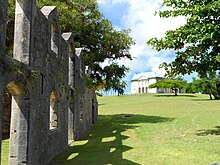
There are no particular diseases to worry about, but you should protect yourself from the sun. Sanitary and medical facilities in Guadeloupe are good. Health care in Guadeloupe is controlled by a state-owned organisation ( Sécurité Sociale ). Doctors are available in almost every village. Tap water is usually safe for consumption. Public sources of water are unsafe if labeled with "Eau non potable" (no drinking water). Visitors from European Union should bring their European Health Insurance Card with them. Ask details at your local health care organisation.
Emergency phone numbers [ edit ]
- emergency services: 112 (which can be called from any mobile phone, even if not connected to a GSM network);
- fire brigade: 18;
- police station: 17;
- specialised emergency medical service (called SAMU): 15.
Respect [ edit ]
While it is a part of France, the country does not have a very Europeanised way of life; life in the Caribbean has a much slower pace. Buses run very infrequently, taxis are hard to find, smaller stores open or close not always on time, queuing in stores is sometimes very time consuming. Try to get into the local pace and do not complain about minor annoyances, as Guadeloupeans will see that as an offence to their way of life. And they are proud of the distinction between Caribbean and metropolitan (French) lifestyle.
Connect [ edit ]
Phones [ edit ].
Country code: 590
Dialing within Guadeloupe: all numbers have 10 digits. Landlines begin by 0590 and mobile phones by 0690.
Dialing to Guadeloupe: international prefix + 590 + phone number without the first 0 (this leads to dial twice 590 which is normal). If you dial from France, just use the 10 digits number.
Dialing from Guadeloupe: the international prefix is 00.
Calling to a mobile phone is more expensive than to a landline. Number beginning by 0800 are free phone. Number beginning by 089 are premium-rate.
Few foreign mobile phone companies offer international roaming to Guadeloupe so double-check before leaving. Your company should provide specific roaming to Guadeloupe since it has deferent mobile phone companies than in mainland France.
Alternatively, you should be able to get a Pay-as-you-go SIM card from various locations. There is one company offering wireless services: Orange Caraïbe [dead link] .
Post [ edit ]
Post offices are found in all cities. Letter boxes are colored in yellow.
Rates [ edit ]
Less than 20 g (postcard, letter with one or two pages in a regular envelope) :
- France (including Oversea Territories DOM-TOM ): €0.53
- area 2 (rest of the world) : €0.90
The basic stamp for regular mail is red with the head of "Marianne" (the Republic logo). It does not carry its value and can therefore be used even after a price increase. It is sold in all Post Offices, Bureaux de Tabacs (Tobacco sellers identified by a red lozenge) and postcard vendors. The latter may also carry other common stamps.
In most Post Offices you will find an automatic machine (yellow) with a scale and a screen. Just put your mail on the scale, tell the machine (French or English) the destination, pay the indicated amount and the machine will deliver a printed stamp.
- Has custom banner
- Has mapframe
- Has map markers
- Articles with dead external links
- Outline regions
- Outline articles
- Region articles
- Lesser Antilles
- All destination articles
- Has Geo parameter
- Pages with maps
Navigation menu
Guadeloupe Travel Guide
Useful tips.
Everything you need to know before you fly to Guadeloupe
Average Trip Cost
December to April

Ideal Length Of Stay
7 to 14 days
About Guadeloupe
Guadeloupe – one of the French islands in the Caribbean, is an archipelago. A collection of five islands, Guadeloupe includes the main islands of Basse-Terre and Grande-Terre along with the smaller islands of Marie-Galante , La Désirade , and the Îles des Saintes. With history influenced by Indian, African, and French traditions, Guadeloupe is rich in culture as well as beautiful natural sites! Dedicated to preserving the natural terrain, residents of Guadeloupe strive to protect the island’s resource and keep the unspoiled landscape the way that it is.
These beautiful islands have something for everyone. Beautiful beaches where sunbathing and strolling along the shore are exciting pastimes to engage in, water sports that are considered the best in the world, historic forts replete with dungeons and battlements to explore, and Creole cuisine, unlike anything that you’ve tasted elsewhere. Guadeloupe is the total package and offers much to even the most seasoned of travelers.
If you have always wanted to dive, Guadeloupe is the perfect place to learn. Crystal clear waters that are protected as part of the Grand Cul-de-Sac Marin Nature Reserve surround the island. Considered to offer some of the best diving in the world, Guadeloupe offers interesting dives that will introduce newbies to the wonder of the world below and challenge experts to use their skills. The array of tropical fish will amaze you as will the clarity of the water and the feeling of peace that envelope you as you glide. You won’t believe how easily you can see the wonders of the deep; exploring the world under the sea is a heady rush.
Surrounded by waters from both the Atlantic Ocean and the Caribbean Sea, Guadeloupe is perfectly positioned for a diver’s wonderland.
Other water sports can be enjoyed as well, such as Jet Skiing along the surface of the water, taking a catamaran out, snorkeling, and good, old-fashioned sunbathing. UNESCO designated Guadeloupe as a biosphere reserve. The beautiful greenery that is abundant in Guadeloupe is a matter of pride for the islanders. Nature lovers can spend hours interacting with the beautiful flora and fauna.
Food is a tradition on the island. Effectively mixing French cuisine with Caribbean practices yields a unique style of food that visitors can’t get enough of. Try island favorites like clam blaff or conch stew. Sample the homegrown produce available at farmer’s markets and taste the difference in the quality and flavor of the food. Take a tour of one of Guadeloupe’s nine rum distilleries and sample the national drink yourself.
Enjoy Guadeloupe. In this lovely archipelago, anyone can find the perfect activity to get involved in. Let yourself go. Truly embody the meaning of the word vacation in Guadeloupe.
See the island in as much depth as you would like. Whatever you choose, there is something sure to tickle your fancy.
Where To Stay In Guadeloupe
Visitors to Guadeloupe stay in a wide variety of accommodations, including private rental, guesthouses, and luxurious all-inclusive hotels. Some of the best hotels in Guadeloupe include:
- La Creole Beach Hotel & Spa
- Club Med La Caravelle – Guadeloupe
- La Toubana Hotel & Spa
- Le Relais du Moulin
- Auberge de la Vieille Tour
- Caraibes Royal
- Mahogany Hôtel Résidence & Spa
Activities In Guadeloupe
Major tourist activities in guadeloupe include:.
- Exploring Point-a-Pitre on Grande-Terre an intriguing mix of French and Caribbean influences
- Hiking at Guadeloupe National Park which stretches over 12,000 acres
- Checking out the Arawak Indians rock carving at the Parc Archelogique des Roches Gravees
- Visiting Terre-de-Bas, a tiny island in Guadeloupe with coffee plantations and traditional villages
- Climbing to the top of LA Soufriere which is still an active volcano
- Snorkeling and diving at top sites like Reserve Cousteau at Pigeon Island off Basse-Terre.
Recent Articles

10 Facts About The Caribbean Region You May Not Know

How Many Independent Countries In The Caribbean?

The 10 Most Visited Caribbean Islands

Indigenous Names of the Caribbean Islands: Reclaiming the Past
Facts about guadeloupe.
660 square miles
Population:
Official language:.
Guadeloupean
Capital City:
Basse-Terre
Government:
Telephone country code:.
right side of the road
Local Beer:
National dish:.
Queen conch fricassee
Main Airport:
Pointe-à-Pitre Airport
Electricity:
230 V/50 Hz – plugs are European standard with two round prongs
Visa Information For Guadeloupe
Guadeloupe is an Overseas Department of France, and as such French immigration rules apply. That said, no visa is required for citizens of the United States, Canada, the United Kingdom, France, and most other European countries.
All visitors to Guadeloupe must have a passport with at least another six months’ validity. Furthermore, all visitors must have a return or onward ticket plus sufficient means to support themselves during their stay in Guadeloupe.
How Long Does It Take To Get A Visa For Guadeloupe
With a valid passport and supporting documents, it can take between 5 to 20 working days for a Guadeloupe (French) visa application to be processed by the nearest French Embassy. Approved visas for entry to Guadeloupe are valid for a stay up to 90 days.
Is It Safe In Guadeloupe
In comparison to major American and European cities, Guadeloupe is relatively safe, and crime levels are low. That said, it is though recommended that visitors be vigilant at all times, especially when away from the major hotels and tourist areas.
How To Get To Guadeloupe
Most visitors to Guadeloupe arrive via the Pointe-à-Pitre International Airport (IATA: PTP, ICAO: TFFR) located on the island of Grande-Terre.
From Canada, book flights to Guadeloupe via:
- Air Canada Montréal–Trudeau
- Air Transat Seasonal: Montréal–Trudeau
From the United States, book flights to Guadeloupe via:
- American Eagle: Miami
- JetBlue: New York–JFK
From Europe, book flights to Guadeloupe via:
- Air Belgium: Charleroi
- Air Caraïbes: Paris-Orly
- Air France: Cayenne, Fort-de-France, Miami, Paris–Orly (Seasonal: Paris–Charles de Gaulle)
- Alitalia (seasonal charter): Milan–Malpensa, Rome–Fiumicino
- Condor (seasonal charter): Frankfurt
- Corsair International: Paris–Orly
- Level: Paris–Orly
- Neos (seasonal charter): Milan–Malpensa
With the Caribbean region, book flights to Guadeloupe via:
- Air Antilles: Dominica–Canefield, Dominica–Douglas-Charles, Fort-de-France, Saint Barthélemy, St. Maarten (SXM), St. Martin (SFG), San Juan, Santo Domingo–La Isabela, Santo Domingo–Las Américas
- Air Caraïbes: Fort-de-France, St. Maarten (SXM), St. Martin (SFG), Santo Domingo-Las Américas
- Air France: Port-au-Prince (seasonal charter: Havana)
- Servicios Aéreos Profesionales: Punta Cana
- Winair: Dominica-Douglas-Charles
When To Go To Guadeloupe
The most popular time to visit Guadeloupe is from mid-December to May when the weather is warm, sunny, and typically dry. From August to late October is the low season as temperatures are hot and muggy; also, there is an increased risk of tropical storms. Some upscale close during the low season for renovations and others offer discounts.
Major events attracting visitors to Guadeloupe include:
- February – March: Guadeloupe Carnival
- July: Traditional Sailing Tour of Guadeloupe
- July – August: International Zouk Festival
- August: Tour De La Guadeloupe
- October: Journée du Créole, Créole Day
- November: Route Du Rhum, transatlantic sailboat race
Weather In Guadeloupe
The weather in Guadeloupe is tropical all year long. The temperature remains in the 80s. Their rainy season is from June to November. The most expensive time to visit Guadeloupe is during Christmas, the French February holidays, July and August.
Getting Married Guadeloupe
Marriage requirements:.
Couples looking to get married in Guadeloupe will need to get a special license, which takes three weeks to process. This is obtained from the Town Hall in the city where the marriage will take place.
Documents required
In addition to the completed application for marriage, both the bride and groom will need their:
- birth certificates along with driver’s licenses or other forms of identification
- certificates of no impediment or single status report
- certificate of Law to be obtained from the French Consular Division
- resident certificates and residency card
Also, if applicable:
- divorce papers i.e., decree absolute and/or death certificate of spouse
- proof of parental consent if under 18 to be witnessed by a French Consular Officer if not a resident in France
- proof of name change by Deed Poll, stamped and signed by a solicitor
Note: All documents much be translated into French. A “Bulletin de Marriage” and “Livret de Famille” are delivered at the ceremony.
Residency Requirement:
Either the groom or bride must reside on the island for at least three months.
Witnesses:
Two witnesses must be present at the ceremony.
Share with Friends!
Subscribe To My Newsletter
Get updates and stay connected to the latest offers and news from the caribbean.
- Digital Marketing
- Weddings & Honeymoons
- Real Estate
- Citizenship
- Trip Planner
- Work With Me
- Business Resoures
Follow On Social Media
Affiliations.

Copyright © 2014 - 2024. Caribbean & Co. All rights reserved.
- Terms of Use
- Privacy Policy


The Guadeloupe Islands
An overseas region of France, The Guadeloupe Islands are an archipelago covering some 630 square miles and made up of five main islands. A bridge connects the two most populated ones, Grande-Terre and Basse-Terre, while Marie-Galante, Les Saintes (actually a miniature archipelago of its own), and La Désirade are accessed via ferry. With the Caribbean to the west and the Atlantic to the east, these dreamy islands boast multicolored beaches, thick forests, hundreds of waterfalls, rugged bluffs, and offshore coral reefs. Grande-Terre is the main entry point and tourism hub, while Basse-Terre is home to Guadeloupe National Park and its active La Grande Soufrière volcano. Les Saintes melds French sophistication with a Caribbean rhythm, and has upscale shopping and dining to match its natural beauty.
- Copy Link copied

Photo By Pack-Shot/Shutterstock
When’s the best time to go to The Guadeloupe Islands?
Guadeloupe enjoys a tropical climate with steady trade winds on the Atlantic side and temperatures hovering between 75 and 86 degrees Fahrenheit year-round. The rainiest season is June to October but thunderstorms rarely last. Wet days are more common in the forest areas of Basse-Terre. High season is December through February when travelers from Europe and North America flock to the islands, while summer is when the French take month-long vacations. With so many islands to explore, it never feels too crowded in Guadeloupe, but some areas, such as Les Saintes, do sell out quickly during high season. For a more culture-focused experience, visit during Carnival in February, or in August during the Fete des Cuisinières—a colorful festival dedicated to the island’s female chefs and queens of Creole cuisine, who parade in traditional costumes while tastings take place.
How to get around The Guadeloupe Islands
Getting to The Guadeloupe Islands is now easier, with flights on JetBlue from major U.S. cities, including New York, Boston, Fort Myers, Denver, and Los Angeles beginning in February 2020. American Airlines and Air France are also options out of Miami. Taxis are abundant—look for their official signage. Most visitors rent a car to have the most flexibility exploring the multiple islands. All the rental companies are based at Pointe-à-Pitre International Airport, and rental pickup and drop off is easy. The infrastructure across Guadeloupe’s main islands of Grande-Terre and Basse-Terre is developed, with well-marked highways and decent roads to most tourist sights, hotels, and attractions. You can also arrange for a driver during your stay if you’d rather not worry about getting lost. Island-hopping to Marie-Galante, La Désirade, or Les Saintes is easy via daily ferries, leaving from Pointe-à-Pitre, Trois-Rivières, Saint-Anne, or Saint-Francois. Book tickets online, or purchase them on-site at least one hour prior to departure.
Can’t miss things to do in The Guadeloupe Islands
There is no doubt Guadeloupe’s beaches are stunners, and the prime reason most visitors venture to the archipelago. Once there, you’ll notice the Guadeloupean way of life is about staying active and healthy. Hike the Guadeloupe National Park, where trails are marked by difficulty, and swim in one of its many waterfalls. Head to popular local beaches like Saint-Anne or La Datcha after sunset during the week, and join locals for an evening of volleyball, swimming, and snacking from food trucks. Pointe-à-Pitre is a must on Saturdays, when the streets come alive with gwo-ka drum performances on the way to the colorful markets. Island-hop to Marie-Galante for a feel of the old Caribbean and for the best local rhum, then head to Les Saintes for the ultimate mix of laid-back beaches and gourmet dining.
Food and drink to try in The Guadeloupe Islands
On the rise as a culinary capital of the Caribbean, the food scene in Guadeloupe is one of its strongest assets. With a blend of African, French, and Indian influences, local restaurants surprise diners not just with their flavors but also with their presentation. Meals kick off with a ti’ punch—a traditional stiff drink made with your choice of white rhum plus cane sugar and lime juice. Neutralize the kick by snacking on delicious accras de morue (cod fritters) or boudin créole (blood sausage). Common entrées include Colombo (a Sri Lankan–influenced curry-like stew with chicken) and seafood prepared in various ways, from lobster to crayfish to stuffed crabs. Try rice and beans as a side, with baked christophine (a type of gourd also known as chayota) topped with cheese. Dip anything in the onion-based sauce chien dip because it’s that good. If you’re roadside at night, find the bokit truck and bite into this fried, stuffed johnnycake. Desserts are taken seriously (you are in a French territory, after all) so be sure to save space for a banane flambée or mango soufflé.
Culture in The Guadeloupe Islands
Guadeloupeans are unabashedly proud of their African roots, taking pains to preserve that heritage alongside their French nationality. You’ll see it in the Creole cuisine, in the lively, colorful markets, in the former sugar plantations turned distilleries, and at museums like the Memorial ACTe, which commemorates the slave trade and Guadeloupe’s tortured history. You will also hear it in the local French Creole language, although French is the official tongue. But more than anywhere else, you will feel the African soul of Guadeloupe in its music. The primary folkloric tradition is gwo-ka (big drum), a high-energy drumming, chanting, and dancing that was born during slavery. A pillar of Guadeloupe’s heritage, gwo-ka (also spelled gwo ka and gwoka) is recognized by UNESCO as part of the Intangible Cultural Heritage of Humanity. Gwo-ka drummers come out at night on the beaches and will play in the streets on market days, among other occasions. You’ll also hear gwo-ka fused with other music played in the clubs of Pointe-à-Pitre. The other dominant genre of musical expression is zouk, a rapid-tempo, carnival-type beat popularized in the 1980s by internationally acclaimed band Kassav’. Their first hit, Zouk La Sé Sèl Médikaman Nou Ni (which means “zouk is our medicine”) took over the charts worldwide in Latin America, Europe, Africa, and even Asia. It’s no exaggeration to say that people often travel to Guadeloupe because of its zouk fame. You can listen and dance to live music at multiple nightlife and restaurant venues, the most popular of which are in Pointe-à-Pitre and Gosier on Grande-Terre. For the most raucous cultural celebration, visit Guadeloupe during Carnival, with celebrations kicking off in January.
For Families
Guadeloupeans love to stay fit and active, and they do so with their families. This healthy spirit, which also translates into other areas like dining and learning new things, helps make The Guadeloupe Islands an excellent destination for families. There are beaches to suit every family’s whim, and you can go surfing on Basse-Terre, windsurfing in Saint-Francois, or snorkeling and diving off Les Saintes Bay. As well as the national park’s multiple trails, waterfalls, and thermal baths, you can stroll through botanical gardens and learn about the flowers and birds there, visit ancient sugar mills on Marie-Galante, and explore historical colonial forts. For something less active but still informative, there’s always shopping the markets. Last but not least, the islands’ multiple Creole and French restaurants are all family-friendly and often have dedicated kids’ menus.
Local travel tips for The Guadeloupe Islands
Guadeloupeans always greet others when entering a place, and you should respond in kind. Sainte-Anne is a dream daytime beach escape, but it’s even better on weekend evenings when roadside stalls sell barbecued conch skewers served on banana leaves. On the road to popular sight Pointe des Châteaux, few know to stop at La Douche (the shower), a hidden cove off the main road with a small, golden-colored beach. The sea crashes against the rocks hard enough to splash high up into the air, creating a cooling spray that falls down onto you like shower droplets.
Local Resources
Guadeloupe Islands Tourist Board
Région Guadeloupe (official site of Guadeloupe Regional Council)
Nouvelles Semaine (local news)
Guide Editor
Lebawit Lily Girma
Lebawit Lily Girma is an award-winning travel journalist and photographer specializing in the Caribbean region. A tropical bird since 2005, she’s lived in Jamaica, Grenada, Belize, and the Dominican Republic, aside from visits to other islands, including Guadeloupe. Lily’s writing and photography, focusing on culture, nature, and adventure, have been published in AFAR, Delta Sky, The Sunday Times Travel Magazine, and MorningCalm (Korean Air magazine), and on the BBC, CNN, Shermans Travel, and more. She is the author of several guidebooks for Moon Travel Guides, including Moon Belize, Belize Cayes, and Moon Dominican Republic. In 2016, Lily was honored with the Marcia Vickery Wallace Memorial Award for excellence in travel journalism from the Caribbean Tourism Organization. Follow her journey online at Sunshine and Stilettos.

Pristine beaches, a vibrant rainforest, and decadent French-Creole cuisine give this department of France a wildly different vibe from its eastern Caribbean neighbors.
8 Perfect Beaches in Gorgeous Guadeloupe
Visit the French Caribbean Nation of Guadeloupe
Top Things to Do in Guadeloupe

The Leading Resource for Guadeloupe, Martinique, St. Barts and St. Martin
The premier guide for guadeloupe, martinique, st. barths and st. martin, guadeloupe - entry requirements, customs.

Terms of Use Privacy Policy About Us Advertising Contact Us
We respect your privacy. Please see our Privacy Policy for details. Agree & continue?
- Skip to main content
- Skip to "About this site"
Language selection
Search travel.gc.ca.
Help us to improve our website. Take our survey !
COVID-19: travel health notice for all travellers
Guadeloupe travel advice
Latest updates: Safety and security – updated information on water shortages
Last updated: May 14, 2024 14:36 ET
On this page
Safety and security, entry and exit requirements, laws and culture, natural disasters and climate, guadeloupe - take normal security precautions.
Take normal security precautions in Guadeloupe.
Back to top
Violent crime is rare in Guadeloupe, despite growing concerns over gang-related violence. Petty crime remains the most significant threat for tourists.
Petty crime, such as pickpocketing and bag-snatching, occurs, including by thieves on motorcycle. There is an increased risk of criminal activity at night, especially in the old town centre of Pointe-à-Pitre, which is a port of call for Caribbean cruises.
- Avoid deserted beaches and isolated areas after dark
- Don’t walk alone at night
- Don’t carry large amounts of cash or wear expensive jewellery
- Ensure that your belongings, including your passport and other travel documents, are secure at all times
- Never leave personal belongings, such as money, credit cards, cell phones and other electronics, unattended, especially on beaches
Credit card and ATM fraud occurs. Be cautious when using debit or credit cards:
- pay careful attention when your cards are being handled by others
- use ATMs located in well-lit public areas or inside a bank or business
- avoid using card readers with an irregular or unusual feature
- cover the keypad with one hand when entering your PIN
- check for any unauthorized transactions on your account statements
Overseas fraud
Demonstrations and strikes
Demonstrations and labour strikes occur. They may cause disruptions to services. Even peaceful demonstrations can turn violent at any time. They can also lead to disruptions to traffic and public transportation.
- Avoid areas where demonstrations and large gatherings are taking place
- Follow the instructions of local authorities
- Monitor local media for information on ongoing demonstrations
Mass gatherings (large-scale events)
Water shortages
Guadeloupe regularly experiences water shortages. Local authorities may impose water rationing measures.
If you are in Guadeloupe:
- keep a sufficient supply of water on hand
- monitor local media for up-to-date information on the situation
Water activities
Coastal waters can be dangerous.
- Exercise caution when swimming
- Respect the flag warnings, which provide notice of water conditions and safety risks on beaches
- Follow the instructions and warnings of local authorities
- If you rent equipment or take scuba diving or sailing classes, ensure that your travel insurance covers such activities
Water safety abroad
If you intend on hiking:
- never do so alone and always hire an experienced guide from a reputable company
- buy travel insurance that includes helicopter rescue and medical evacuation
- ensure that your physical condition is good enough to meet the challenges of your activity
- ensure that you’re properly equipped and well informed about weather and other conditions that may pose a hazard
- inform a family member or friend of your itinerary, including when you expect to be back to camp
- obtain detailed information on trekking routes before setting out and do not venture off marked trails
Hiking on the volcano “La Soufrière” can be restricted by the Prefecture under certain circumstances.
Volcanic activity of the Soufrière - Préfet de la région Guadeloupe (in French)
Road safety
Road conditions and road safety are very good throughout the island.
Roads are well-maintained but they may be narrow and winding. Night driving can be dangerous, especially in the mountains and on rural roads.
Public transportation
Bus services are safe. Both urban and inter-city bus transportation is available.
Taxis are safe but expensive. By law, they must be metered.
Ferry services provide transportation to the islands that make up Guadeloupe as well as to Martinique and Dominica.
Pointe-à-Pitre is a cruise ship stop.
Advice for Cruise Travellers
We do not make assessments on the compliance of foreign domestic airlines with international safety standards.
Information about foreign domestic airlines
Guadeloupe is a French overseas department. However, it is not part of the Schengen Area.
Every country or territory decides who can enter or exit through its borders. The Government of Canada cannot intervene on your behalf if you do not meet your destination’s entry or exit requirements.
We have obtained the information on this page from French authorities. It can, however, change at any time.
Verify this information with the Foreign Representatives in Canada .
Entry requirements vary depending on the type of passport you use for travel.
Before you travel, check with your transportation company about passport requirements. Its rules on passport validity may be more stringent than the country’s entry rules.
Regular Canadian passport
Your passport must be valid for the duration of your stay.
Passport for official travel
Different entry rules may apply.
Official travel
Passport with “X” gender identifier
While the Government of Canada issues passports with an “X” gender identifier, it cannot guarantee your entry or transit through other countries. You might face entry restrictions in countries that do not recognize the “X” gender identifier. Before you leave, check with the closest foreign representative for your destination.
Other travel documents
Different entry rules may apply when travelling with a temporary passport or an emergency travel document. Before you leave, check with the closest foreign representative for your destination.
Useful links
- Foreign Representatives in Canada
- Canadian passports
Tourist visa: not required for stays up to 90 days Residence visa: required Work visa: required Business visa: required Student visa: required
Other entry requirements
Customs officials may ask you to show them a return or onward ticket and proof of sufficient funds to cover your stay.
Children and travel
Learn more about travelling with children .
Yellow fever
Learn about potential entry requirements related to yellow fever (vaccines section).
Relevant Travel Health Notices
- Global Measles Notice - 13 March, 2024
- Zika virus: Advice for travellers - 31 August, 2023
- COVID-19 and International Travel - 13 March, 2024
- Dengue: Advice for travellers - 6 May, 2024
This section contains information on possible health risks and restrictions regularly found or ongoing in the destination. Follow this advice to lower your risk of becoming ill while travelling. Not all risks are listed below.
Consult a health care professional or visit a travel health clinic preferably 6 weeks before you travel to get personalized health advice and recommendations.
Routine vaccines
Be sure that your routine vaccinations , as per your province or territory , are up-to-date before travelling, regardless of your destination.
Some of these vaccinations include measles-mumps-rubella (MMR), diphtheria, tetanus, pertussis, polio, varicella (chickenpox), influenza and others.
Pre-travel vaccines and medications
You may be at risk for preventable diseases while travelling in this destination. Talk to a travel health professional about which medications or vaccines may be right for you, based on your destination and itinerary.
Yellow fever is a disease caused by a flavivirus from the bite of an infected mosquito.
Travellers get vaccinated either because it is required to enter a country or because it is recommended for their protection.
- There is no risk of yellow fever in this country.
Country Entry Requirement*
- Proof of vaccination is required if you are coming from or have transited through an airport of a country where yellow fever occurs.
Recommendation
- Vaccination is not recommended.
- Discuss travel plans, activities, and destinations with a health care professional.
- Contact a designated Yellow Fever Vaccination Centre well in advance of your trip to arrange for vaccination.
About Yellow Fever
Yellow Fever Vaccination Centres in Canada * It is important to note that country entry requirements may not reflect your risk of yellow fever at your destination. It is recommended that you contact the nearest diplomatic or consular office of the destination(s) you will be visiting to verify any additional entry requirements.
There is a risk of hepatitis A in this destination. It is a disease of the liver. People can get hepatitis A if they ingest contaminated food or water, eat foods prepared by an infectious person, or if they have close physical contact (such as oral-anal sex) with an infectious person, although casual contact among people does not spread the virus.
Practise safe food and water precautions and wash your hands often. Vaccination is recommended for all travellers to areas where hepatitis A is present.
Measles is a highly contagious viral disease. It can spread quickly from person to person by direct contact and through droplets in the air.
Anyone who is not protected against measles is at risk of being infected with it when travelling internationally.
Regardless of where you are going, talk to a health care professional before travelling to make sure you are fully protected against measles.
Proof of vaccination:
Proof of measles vaccination is required from all travellers 62 years old or younger, entering the territory via Samoa or the Kingdom of Tonga. Measles vaccination must have been administered at least 14 days prior to travel. If proof is not presented, travellers will be returned to their previous port of departure.
For more information, see the American Samoa Government’s declaration of continued public health emergency. To obtain proof of vaccination, contact your health care professional or your local public health authority.
Hepatitis B is a risk in every destination. It is a viral liver disease that is easily transmitted from one person to another through exposure to blood and body fluids containing the hepatitis B virus. Travellers who may be exposed to blood or other bodily fluids (e.g., through sexual contact, medical treatment, sharing needles, tattooing, acupuncture or occupational exposure) are at higher risk of getting hepatitis B.
Hepatitis B vaccination is recommended for all travellers. Prevent hepatitis B infection by practicing safe sex, only using new and sterile drug equipment, and only getting tattoos and piercings in settings that follow public health regulations and standards.
Coronavirus disease (COVID-19) is an infectious viral disease. It can spread from person to person by direct contact and through droplets in the air.
It is recommended that all eligible travellers complete a COVID-19 vaccine series along with any additional recommended doses in Canada before travelling. Evidence shows that vaccines are very effective at preventing severe illness, hospitalization and death from COVID-19. While vaccination provides better protection against serious illness, you may still be at risk of infection from the virus that causes COVID-19. Anyone who has not completed a vaccine series is at increased risk of being infected with the virus that causes COVID-19 and is at greater risk for severe disease when travelling internationally.
Before travelling, verify your destination’s COVID-19 vaccination entry/exit requirements. Regardless of where you are going, talk to a health care professional before travelling to make sure you are adequately protected against COVID-19.
The best way to protect yourself from seasonal influenza (flu) is to get vaccinated every year. Get the flu shot at least 2 weeks before travelling.
The flu occurs worldwide.
- In the Northern Hemisphere, the flu season usually runs from November to April.
- In the Southern Hemisphere, the flu season usually runs between April and October.
- In the tropics, there is flu activity year round.
The flu vaccine available in one hemisphere may only offer partial protection against the flu in the other hemisphere.
The flu virus spreads from person to person when they cough or sneeze or by touching objects and surfaces that have been contaminated with the virus. Clean your hands often and wear a mask if you have a fever or respiratory symptoms.
In this destination, rabies may be present in some wildlife species, including bats. Rabies is a deadly disease that spreads to humans primarily through bites or scratches from an infected animal.
If you are bitten or scratched by an animal while travelling, immediately wash the wound with soap and clean water and see a health care professional.
Before travel, discuss rabies vaccination with a health care professional. It may be recommended for travellers who will be working directly with wildlife.
Safe food and water precautions
Many illnesses can be caused by eating food or drinking beverages contaminated by bacteria, parasites, toxins, or viruses, or by swimming or bathing in contaminated water.
- Learn more about food and water precautions to take to avoid getting sick by visiting our eat and drink safely abroad page. Remember: Boil it, cook it, peel it, or leave it!
- Avoid getting water into your eyes, mouth or nose when swimming or participating in activities in freshwater (streams, canals, lakes), particularly after flooding or heavy rain. Water may look clean but could still be polluted or contaminated.
- Avoid inhaling or swallowing water while bathing, showering, or swimming in pools or hot tubs.
Travellers' diarrhea is the most common illness affecting travellers. It is spread from eating or drinking contaminated food or water.
Risk of developing travellers' diarrhea increases when travelling in regions with poor standards of hygiene and sanitation. Practise safe food and water precautions.
The most important treatment for travellers' diarrhea is rehydration (drinking lots of fluids). Carry oral rehydration salts when travelling.
Typhoid is a bacterial infection spread by contaminated food or water. Risk is higher among children, travellers going to rural areas, travellers visiting friends and relatives or those travelling for a long period of time.
Travellers visiting regions with a risk of typhoid, especially those exposed to places with poor sanitation, should speak to a health care professional about vaccination.
Insect bite prevention
Many diseases are spread by the bites of infected insects such as mosquitoes, ticks, fleas or flies. When travelling to areas where infected insects may be present:
- Use insect repellent (bug spray) on exposed skin
- Cover up with light-coloured, loose clothes made of tightly woven materials such as nylon or polyester
- Minimize exposure to insects
- Use mosquito netting when sleeping outdoors or in buildings that are not fully enclosed
To learn more about how you can reduce your risk of infection and disease caused by bites, both at home and abroad, visit our insect bite prevention page.
Find out what types of insects are present where you’re travelling, when they’re most active, and the symptoms of the diseases they spread.
There is a risk of chikungunya in this country. The risk may vary between regions of a country. Chikungunya is a virus spread through the bite of an infected mosquito. Chikungunya can cause a viral disease that typically causes fever and pain in the joints. In some cases, the joint pain can be severe and last for months or years.
Protect yourself from mosquito bites at all times. There is no vaccine available for chikungunya.
- In this country, dengue is a risk to travellers. It is a viral disease spread to humans by mosquito bites.
- Dengue can cause flu-like symptoms. In some cases, it can lead to severe dengue, which can be fatal.
- The level of risk of dengue changes seasonally, and varies from year to year. The level of risk also varies between regions in a country and can depend on the elevation in the region.
- Mosquitoes carrying dengue typically bite during the daytime, particularly around sunrise and sunset.
- Protect yourself from mosquito bites . There is no vaccine or medication that protects against dengue.
Zika virus is a risk in this country.
Zika virus is primarily spread through the bite of an infected mosquito. It can also be sexually transmitted. Zika virus can cause serious birth defects.
During your trip:
- Prevent mosquito bites at all times.
- Use condoms correctly or avoid sexual contact, particularly if you are pregnant.
If you are pregnant or planning a pregnancy, you should discuss the potential risks of travelling to this destination with your health care provider. You may choose to avoid or postpone travel.
For more information, see Zika virus: Pregnant or planning a pregnancy.
Animal precautions
Some infections, such as rabies and influenza, can be shared between humans and animals. Certain types of activities may increase your chance of contact with animals, such as travelling in rural or forested areas, camping, hiking, and visiting wet markets (places where live animals are slaughtered and sold) or caves.
Travellers are cautioned to avoid contact with animals, including dogs, livestock (pigs, cows), monkeys, snakes, rodents, birds, and bats, and to avoid eating undercooked wild game.
Closely supervise children, as they are more likely to come in contact with animals.
Person-to-person infections
Stay home if you’re sick and practise proper cough and sneeze etiquette , which includes coughing or sneezing into a tissue or the bend of your arm, not your hand. Reduce your risk of colds, the flu and other illnesses by:
- washing your hands often
- avoiding or limiting the amount of time spent in closed spaces, crowded places, or at large-scale events (concerts, sporting events, rallies)
- avoiding close physical contact with people who may be showing symptoms of illness
Sexually transmitted infections (STIs) , HIV , and mpox are spread through blood and bodily fluids; use condoms, practise safe sex, and limit your number of sexual partners. Check with your local public health authority pre-travel to determine your eligibility for mpox vaccine.
HIV (Human Immunodeficiency Virus) is a virus that attacks and impairs the immune system, resulting in a chronic, progressive illness known as AIDS (Acquired Immunodeficiency Syndrome).
High risk activities include anything which puts you in contact with blood or body fluids, such as unprotected sex and exposure to unsterilized needles for medications or other substances (for example, steroids and drugs), tattooing, body-piercing or acupuncture.
Medical services and facilities
A fire significantly damaged the Centre Hospitalier Universitaire in Pointe-à-Pitre/Abymes in November 2017. Since then, health care services have been importantly reduced. Serious medical cases will likely require medical evacuation to Martinique or mainland France for treatment.
Construction of the new hospital is underway and the delivery is planned for 2023.
In clinics, payment in advance is often expected.
Not all doctors speak or understand English.
Make sure you get travel insurance that includes coverage for medical evacuation and hospital stays.
Travel health and safety
Keep in Mind...
The decision to travel is the sole responsibility of the traveller. The traveller is also responsible for his or her own personal safety.
Be prepared. Do not expect medical services to be the same as in Canada. Pack a travel health kit , especially if you will be travelling away from major city centres.
You must abide by local laws.
Learn about what you should do and how we can help if you are arrested or detained abroad .
Guadeloupe is a French overseas department.
Canada and France are signatories to the European Convention on the Transfer of Sentenced Persons. This enables a Canadian imprisoned in France to request a transfer to a Canadian prison to complete a sentence. The transfer requires the agreement of both Canadian and French authorities.
Penalties for possession, use or trafficking of illegal drugs are severe. Convicted offenders can expect jail sentences and heavy fines.
Drugs, alcohol and travel
Dual citizenship
Dual citizenship is legally recognized in France.
If you are a Canadian citizen, but also a citizen of France, our ability to offer you consular services may be limited while you're there. You may also be subject to different entry/exit requirements .
Travellers with dual citizenship
International Child Abduction
The Hague Convention on the Civil Aspects of International Child Abduction is an international treaty. It can help parents with the return of children who have been removed to or retained in certain countries in violation of custody rights. The convention applies between Canada and France.
If your child was wrongfully taken to, or is being held in Guadeloupe, and if the applicable conditions are met, you may apply for the return of your child to the Guadeloupean court.
If you are in this situation:
- act as quickly as you can
- contact the Central Authority for your province or territory of residence for information on starting an application under The Hague Convention
- consult a lawyer in Canada and in Guadeloupe to explore all the legal options for the return of your child
- report the situation to the nearest Canadian government office abroad or to the Vulnerable Children’s Consular Unit at Global Affairs Canada by calling the Emergency Watch and Response Centre
If your child was removed from a country other than Canada, consult a lawyer to determine if The Hague Convention applies.
Be aware that Canadian consular officials cannot interfere in private legal matters or in another country’s judicial affairs.
- List of Canadian Central Authorities for the Hague Convention
- International Child Abduction: A Guidebook for Left-Behind Parents
- Travelling with children
- The Hague Convention - Hague Conference on Private International Law
- Canadian embassies and consulates by destination
- Emergency Watch and Response Centre
If you wish to marry in Guadeloupe, you should consult local authorities at the City hall to obtain appropriate information. The Embassy of France in Canada can also provide you with the requested documents.
- Foreign diplomatic missions and consulates in Canada
- Get married in France - Embassy of Canada in France
- Marriage abroad
Investments
If you plan on buying property, or making other investments in Guadeloupe, seek legal advice in Canada and in Guadeloupe. Do so before making commitments. Related disputes could take time and be costly to resolve.
Imports and exports
French customs authorities may enforce strict regulations in Guadeloupe concerning temporary import or export of items such as firearms, medications or animals.
You may drive in Guadeloupe with a valid Canadian driver’s license for up to 20 days. After that period, you must have an international driving permit.
The legal driving age in France and its territories is 18. However, many rental car companies require drivers to be at least 25 years of age and have two years of driving experience.
International Driving Permit
The currency in Guadeloupe is the euro (EUR).
Hurricane season
Hurricanes usually occur from mid-May to the end of November. During this period, even small tropical storms can quickly develop into major hurricanes.
These severe storms can put you at risk and hamper the provision of essential services.
If you decide to travel to a coastal area during the hurricane season:
- know that you expose yourself to serious safety risks
- be prepared to change your travel plans on short notice, including cutting short or cancelling your trip
- stay informed of the latest regional weather forecasts
- carry emergency contact information for your airline or tour operator
- follow the advice and instructions of local authorities
- Tornadoes, cyclones, hurricanes, typhoons and monsoons
- Large-scale emergencies abroad
- Active storm tracking and hurricane watches and warnings - United States’ National Hurricane Center
Volcanoes and earthquakes
Guadeloupe is located in an active seismic zone. Earthquakes and tremors occur.
The Grande Soufrière volcano is active. It is located on the south side of Basse-Terre Island.
V olcan o plan – Préfet de la région Guadeloupe (in French)
Local services
In case of emergency, dial:
- ambulance: 15
- firefighters: 18
- coastguard: 196
Consular assistance
French Guiana, Guadeloupe, Martinique, Mayotte, Monaco, La Réunion, Saint-Barthélemy, Saint-Martin, Saint-Pierre-et-Miquelon
For emergency consular assistance, call the Embassy of Canada to France, in Paris, and follow the instructions. At any time, you may also contact the Emergency Watch and Response Centre in Ottawa.
The decision to travel is your choice and you are responsible for your personal safety abroad. We take the safety and security of Canadians abroad very seriously and provide credible and timely information in our Travel Advice to enable you to make well-informed decisions regarding your travel abroad.
The content on this page is provided for information only. While we make every effort to give you correct information, it is provided on an "as is" basis without warranty of any kind, expressed or implied. The Government of Canada does not assume responsibility and will not be liable for any damages in connection to the information provided.
If you need consular assistance while abroad, we will make every effort to help you. However, there may be constraints that will limit the ability of the Government of Canada to provide services.
Learn more about consular services .
Risk Levels
take normal security precautions.
Take similar precautions to those you would take in Canada.
Exercise a high degree of caution
There are certain safety and security concerns or the situation could change quickly. Be very cautious at all times, monitor local media and follow the instructions of local authorities.
IMPORTANT: The two levels below are official Government of Canada Travel Advisories and are issued when the safety and security of Canadians travelling or living in the country or region may be at risk.
Avoid non-essential travel
Your safety and security could be at risk. You should think about your need to travel to this country, territory or region based on family or business requirements, knowledge of or familiarity with the region, and other factors. If you are already there, think about whether you really need to be there. If you do not need to be there, you should think about leaving.
Avoid all travel
You should not travel to this country, territory or region. Your personal safety and security are at great risk. If you are already there, you should think about leaving if it is safe to do so.
You are using an outdated browser. Upgrade your browser today or install Google Chrome Frame to better experience this site.
Guadeloupe Traveler View
Travel health notices, vaccines and medicines, non-vaccine-preventable diseases, stay healthy and safe.
- Packing List
After Your Trip
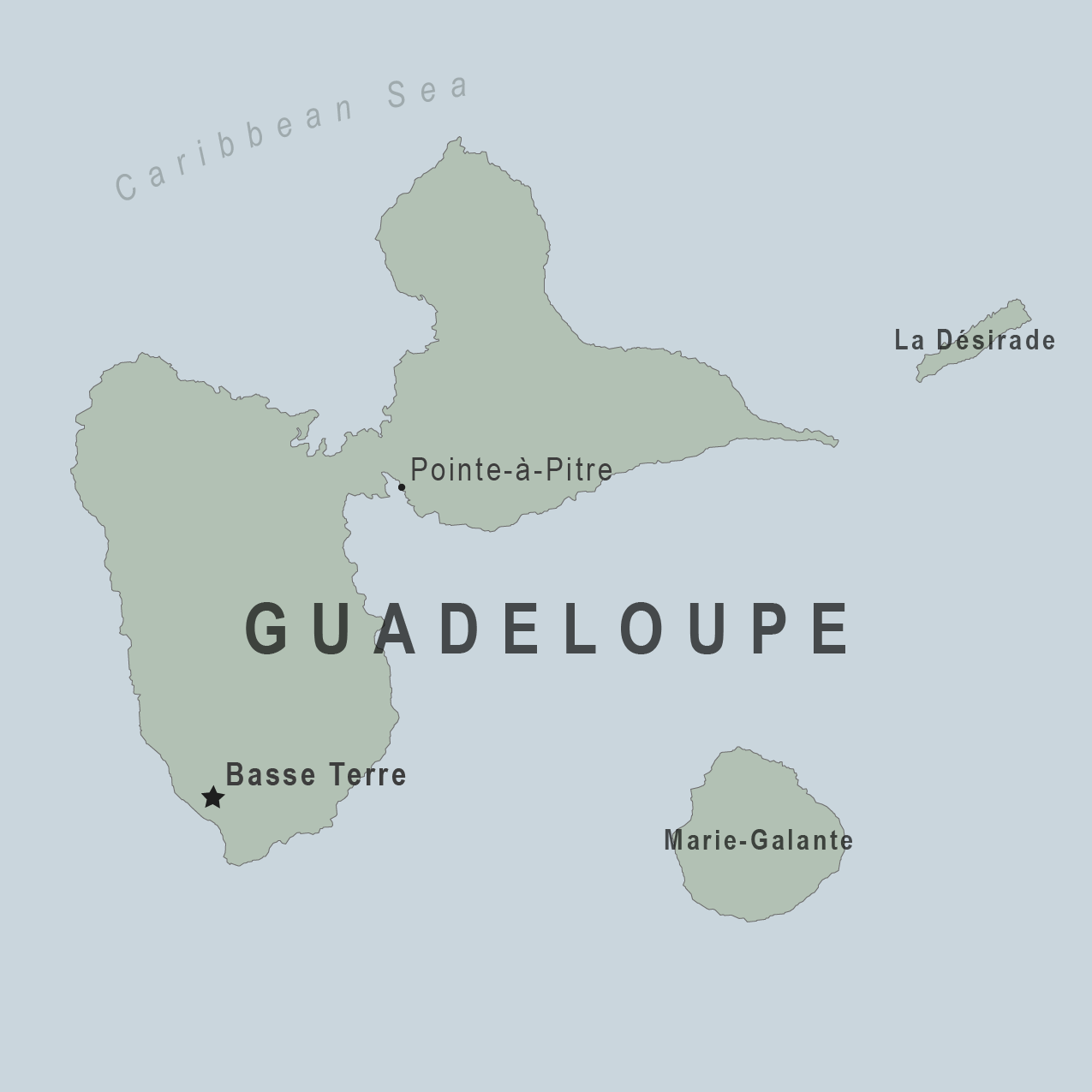
Be aware of current health issues in Guadeloupe. Learn how to protect yourself.
Level 1 Practice Usual Precautions
- Dengue in the Americas May 16, 2024 Dengue is a risk in many parts of Central and South America, Mexico, and the Caribbean. Some countries are reporting increased numbers of cases of the disease. Travelers to the Americas can protect themselves by preventing mosquito bites. Destination List: Argentina, Brazil, Colombia, Costa Rica, Curaçao, Ecuador, including the Galápagos Islands, French Guiana (France), Guadeloupe, Guatemala, Guyana, Honduras, Martinique (France), Mexico, Nicaragua, Panama, Paraguay, Peru, Uruguay
⇧ Top
Check the vaccines and medicines list and visit your doctor at least a month before your trip to get vaccines or medicines you may need. If you or your doctor need help finding a location that provides certain vaccines or medicines, visit the Find a Clinic page.
Routine vaccines
Recommendations.
Make sure you are up-to-date on all routine vaccines before every trip. Some of these vaccines include
- Chickenpox (Varicella)
- Diphtheria-Tetanus-Pertussis
- Flu (influenza)
- Measles-Mumps-Rubella (MMR)
Immunization schedules
All eligible travelers should be up to date with their COVID-19 vaccines. Please see Your COVID-19 Vaccination for more information.
COVID-19 vaccine
Hepatitis A
Recommended for unvaccinated travelers one year old or older going to Guadeloupe.
Infants 6 to 11 months old should also be vaccinated against Hepatitis A. The dose does not count toward the routine 2-dose series.
Travelers allergic to a vaccine component or who are younger than 6 months should receive a single dose of immune globulin, which provides effective protection for up to 2 months depending on dosage given.
Unvaccinated travelers who are over 40 years old, immunocompromised, or have chronic medical conditions planning to depart to a risk area in less than 2 weeks should get the initial dose of vaccine and at the same appointment receive immune globulin.
Hepatitis A - CDC Yellow Book
Dosing info - Hep A
Hepatitis B
Recommended for unvaccinated travelers of all ages traveling to Guadeloupe.
Hepatitis B - CDC Yellow Book
Dosing info - Hep B
Cases of measles are on the rise worldwide. Travelers are at risk of measles if they have not been fully vaccinated at least two weeks prior to departure, or have not had measles in the past, and travel internationally to areas where measles is spreading.
All international travelers should be fully vaccinated against measles with the measles-mumps-rubella (MMR) vaccine, including an early dose for infants 6–11 months, according to CDC’s measles vaccination recommendations for international travel .
Measles (Rubeola) - CDC Yellow Book
Guadeloupe is free of dog rabies. However, rabies may still be present in wildlife species, particularly bats. CDC recommends rabies vaccination before travel only for people working directly with wildlife. These people may include veterinarians, animal handlers, field biologists, or laboratory workers working with specimens from mammalian species.
Rabies - CDC Yellow Book
Recommended for most travelers, especially those staying with friends or relatives or visiting smaller cities or rural areas.
Typhoid - CDC Yellow Book
Dosing info - Typhoid
Yellow Fever
Required for travelers ≥1 year old arriving from countries with risk for YF virus transmission; this includes >12-hour airport transits or layovers in countries with risk for YF virus transmission. 1
Yellow Fever - CDC Yellow Book
Avoid contaminated water
Leptospirosis
How most people get sick (most common modes of transmission)
- Touching urine or other body fluids from an animal infected with leptospirosis
- Swimming or wading in urine-contaminated fresh water, or contact with urine-contaminated mud
- Drinking water or eating food contaminated with animal urine
- Avoid contaminated water and soil
Clinical Guidance
Avoid bug bites, african tick-bite fever.
- Avoid Bug Bites
African Tick-bite fever
- Mosquito bite
- An infected pregnant woman can spread it to her unborn baby
Airborne & droplet
- Breathing in air or accidentally eating food contaminated with the urine, droppings, or saliva of infected rodents
- Bite from an infected rodent
- Less commonly, being around someone sick with hantavirus (only occurs with Andes virus)
- Avoid rodents and areas where they live
- Avoid sick people
Tuberculosis (TB)
- Breathe in TB bacteria that is in the air from an infected and contagious person coughing, speaking, or singing.
Learn actions you can take to stay healthy and safe on your trip. Vaccines cannot protect you from many diseases in Guadeloupe, so your behaviors are important.
Eat and drink safely
Food and water standards around the world vary based on the destination. Standards may also differ within a country and risk may change depending on activity type (e.g., hiking versus business trip). You can learn more about safe food and drink choices when traveling by accessing the resources below.
- Choose Safe Food and Drinks When Traveling
- Water Treatment Options When Hiking, Camping or Traveling
- Global Water, Sanitation and Hygiene | Healthy Water
- Avoid Contaminated Water During Travel
You can also visit the Department of State Country Information Pages for additional information about food and water safety.
Prevent bug bites
Bugs (like mosquitoes, ticks, and fleas) can spread a number of diseases in Guadeloupe. Many of these diseases cannot be prevented with a vaccine or medicine. You can reduce your risk by taking steps to prevent bug bites.
What can I do to prevent bug bites?
- Cover exposed skin by wearing long-sleeved shirts, long pants, and hats.
- Use an appropriate insect repellent (see below).
- Use permethrin-treated clothing and gear (such as boots, pants, socks, and tents). Do not use permethrin directly on skin.
- Stay and sleep in air-conditioned or screened rooms.
- Use a bed net if the area where you are sleeping is exposed to the outdoors.
What type of insect repellent should I use?
- FOR PROTECTION AGAINST TICKS AND MOSQUITOES: Use a repellent that contains 20% or more DEET for protection that lasts up to several hours.
- Picaridin (also known as KBR 3023, Bayrepel, and icaridin)
- Oil of lemon eucalyptus (OLE) or para-menthane-diol (PMD)
- 2-undecanone
- Always use insect repellent as directed.
What should I do if I am bitten by bugs?
- Avoid scratching bug bites, and apply hydrocortisone cream or calamine lotion to reduce the itching.
- Check your entire body for ticks after outdoor activity. Be sure to remove ticks properly.
What can I do to avoid bed bugs?
Although bed bugs do not carry disease, they are an annoyance. See our information page about avoiding bug bites for some easy tips to avoid them. For more information on bed bugs, see Bed Bugs .
For more detailed information on avoiding bug bites, see Avoid Bug Bites .
Stay safe outdoors
If your travel plans in Guadeloupe include outdoor activities, take these steps to stay safe and healthy during your trip.
- Stay alert to changing weather conditions and adjust your plans if conditions become unsafe.
- Prepare for activities by wearing the right clothes and packing protective items, such as bug spray, sunscreen, and a basic first aid kit.
- Consider learning basic first aid and CPR before travel. Bring a travel health kit with items appropriate for your activities.
- If you are outside for many hours in heat, eat salty snacks and drink water to stay hydrated and replace salt lost through sweating.
- Protect yourself from UV radiation : use sunscreen with an SPF of at least 15, wear protective clothing, and seek shade during the hottest time of day (10 a.m.–4 p.m.).
- Be especially careful during summer months and at high elevation. Because sunlight reflects off snow, sand, and water, sun exposure may be increased during activities like skiing, swimming, and sailing.
- Very cold temperatures can be dangerous. Dress in layers and cover heads, hands, and feet properly if you are visiting a cold location.
Stay safe around water
- Swim only in designated swimming areas. Obey lifeguards and warning flags on beaches.
- Practice safe boating—follow all boating safety laws, do not drink alcohol if driving a boat, and always wear a life jacket.
- Do not dive into shallow water.
- Do not swim in freshwater in developing areas or where sanitation is poor.
- Avoid swallowing water when swimming. Untreated water can carry germs that make you sick.
- To prevent infections, wear shoes on beaches where there may be animal waste.
Schistosomiasis, a parasitic infection that can be spread in fresh water, is found in Guadeloupe. Avoid swimming in fresh, unchlorinated water, such as lakes, ponds, or rivers.
Keep away from animals
Most animals avoid people, but they may attack if they feel threatened, are protecting their young or territory, or if they are injured or ill. Animal bites and scratches can lead to serious diseases such as rabies.
Follow these tips to protect yourself:
- Do not touch or feed any animals you do not know.
- Do not allow animals to lick open wounds, and do not get animal saliva in your eyes or mouth.
- Avoid rodents and their urine and feces.
- Traveling pets should be supervised closely and not allowed to come in contact with local animals.
- If you wake in a room with a bat, seek medical care immediately. Bat bites may be hard to see.
All animals can pose a threat, but be extra careful around dogs, bats, monkeys, sea animals such as jellyfish, and snakes. If you are bitten or scratched by an animal, immediately:
- Wash the wound with soap and clean water.
- Go to a doctor right away.
- Tell your doctor about your injury when you get back to the United States.
Consider buying medical evacuation insurance. Rabies is a deadly disease that must be treated quickly, and treatment may not be available in some countries.
Reduce your exposure to germs
Follow these tips to avoid getting sick or spreading illness to others while traveling:
- Wash your hands often, especially before eating.
- If soap and water aren’t available, clean hands with hand sanitizer (containing at least 60% alcohol).
- Don’t touch your eyes, nose, or mouth. If you need to touch your face, make sure your hands are clean.
- Cover your mouth and nose with a tissue or your sleeve (not your hands) when coughing or sneezing.
- Try to avoid contact with people who are sick.
- If you are sick, stay home or in your hotel room, unless you need medical care.
Avoid sharing body fluids
Diseases can be spread through body fluids, such as saliva, blood, vomit, and semen.
Protect yourself:
- Use latex condoms correctly.
- Do not inject drugs.
- Limit alcohol consumption. People take more risks when intoxicated.
- Do not share needles or any devices that can break the skin. That includes needles for tattoos, piercings, and acupuncture.
- If you receive medical or dental care, make sure the equipment is disinfected or sanitized.
Know how to get medical care while traveling
Plan for how you will get health care during your trip, should the need arise:
- Carry a list of local doctors and hospitals at your destination.
- Review your health insurance plan to determine what medical services it would cover during your trip. Consider purchasing travel health and medical evacuation insurance.
- Carry a card that identifies, in the local language, your blood type, chronic conditions or serious allergies, and the generic names of any medications you take.
- Some prescription drugs may be illegal in other countries. Call Guadeloupe’s embassy to verify that all of your prescription(s) are legal to bring with you.
- Bring all the medicines (including over-the-counter medicines) you think you might need during your trip, including extra in case of travel delays. Ask your doctor to help you get prescriptions filled early if you need to.
Many foreign hospitals and clinics are accredited by the Joint Commission International. A list of accredited facilities is available at their website ( www.jointcommissioninternational.org ).
In some countries, medicine (prescription and over-the-counter) may be substandard or counterfeit. Bring the medicines you will need from the United States to avoid having to buy them at your destination.
Select safe transportation
Motor vehicle crashes are the #1 killer of healthy US citizens in foreign countries.
In many places cars, buses, large trucks, rickshaws, bikes, people on foot, and even animals share the same lanes of traffic, increasing the risk for crashes.
Be smart when you are traveling on foot.
- Use sidewalks and marked crosswalks.
- Pay attention to the traffic around you, especially in crowded areas.
- Remember, people on foot do not always have the right of way in other countries.
Riding/Driving
Choose a safe vehicle.
- Choose official taxis or public transportation, such as trains and buses.
- Ride only in cars that have seatbelts.
- Avoid overcrowded, overloaded, top-heavy buses and minivans.
- Avoid riding on motorcycles or motorbikes, especially motorbike taxis. (Many crashes are caused by inexperienced motorbike drivers.)
- Choose newer vehicles—they may have more safety features, such as airbags, and be more reliable.
- Choose larger vehicles, which may provide more protection in crashes.
Think about the driver.
- Do not drive after drinking alcohol or ride with someone who has been drinking.
- Consider hiring a licensed, trained driver familiar with the area.
- Arrange payment before departing.
Follow basic safety tips.
- Wear a seatbelt at all times.
- Sit in the back seat of cars and taxis.
- When on motorbikes or bicycles, always wear a helmet. (Bring a helmet from home, if needed.)
- Avoid driving at night; street lighting in certain parts of Guadeloupe may be poor.
- Do not use a cell phone or text while driving (illegal in many countries).
- Travel during daylight hours only, especially in rural areas.
- If you choose to drive a vehicle in Guadeloupe, learn the local traffic laws and have the proper paperwork.
- Get any driving permits and insurance you may need. Get an International Driving Permit (IDP). Carry the IDP and a US-issued driver's license at all times.
- Check with your auto insurance policy's international coverage, and get more coverage if needed. Make sure you have liability insurance.
- Avoid using local, unscheduled aircraft.
- If possible, fly on larger planes (more than 30 seats); larger airplanes are more likely to have regular safety inspections.
- Try to schedule flights during daylight hours and in good weather.
Medical Evacuation Insurance
If you are seriously injured, emergency care may not be available or may not meet US standards. Trauma care centers are uncommon outside urban areas. Having medical evacuation insurance can be helpful for these reasons.
Helpful Resources
Road Safety Overseas (Information from the US Department of State): Includes tips on driving in other countries, International Driving Permits, auto insurance, and other resources.
The Association for International Road Travel has country-specific Road Travel Reports available for most countries for a minimal fee.
Maintain personal security
Use the same common sense traveling overseas that you would at home, and always stay alert and aware of your surroundings.
Before you leave
- Research your destination(s), including local laws, customs, and culture.
- Monitor travel advisories and alerts and read travel tips from the US Department of State.
- Enroll in the Smart Traveler Enrollment Program (STEP) .
- Leave a copy of your itinerary, contact information, credit cards, and passport with someone at home.
- Pack as light as possible, and leave at home any item you could not replace.
While at your destination(s)
- Carry contact information for the nearest US embassy or consulate .
- Carry a photocopy of your passport and entry stamp; leave the actual passport securely in your hotel.
- Follow all local laws and social customs.
- Do not wear expensive clothing or jewelry.
- Always keep hotel doors locked, and store valuables in secure areas.
- If possible, choose hotel rooms between the 2nd and 6th floors.
Healthy Travel Packing List
Use the Healthy Travel Packing List for Guadeloupe for a list of health-related items to consider packing for your trip. Talk to your doctor about which items are most important for you.
Why does CDC recommend packing these health-related items?
It’s best to be prepared to prevent and treat common illnesses and injuries. Some supplies and medicines may be difficult to find at your destination, may have different names, or may have different ingredients than what you normally use.
If you are not feeling well after your trip, you may need to see a doctor. If you need help finding a travel medicine specialist, see Find a Clinic . Be sure to tell your doctor about your travel, including where you went and what you did on your trip. Also tell your doctor if you were bitten or scratched by an animal while traveling.
For more information on what to do if you are sick after your trip, see Getting Sick after Travel .
Map Disclaimer - The boundaries and names shown and the designations used on maps do not imply the expression of any opinion whatsoever on the part of the Centers for Disease Control and Prevention concerning the legal status of any country, territory, city or area or of its authorities, or concerning the delimitation of its frontiers or boundaries. Approximate border lines for which there may not yet be full agreement are generally marked.
Other Destinations
If you need help finding travel information:
Message & data rates may apply. CDC Privacy Policy
File Formats Help:
- Adobe PDF file
- Microsoft PowerPoint file
- Microsoft Word file
- Microsoft Excel file
- Audio/Video file
- Apple Quicktime file
- RealPlayer file
- Zip Archive file
Exit Notification / Disclaimer Policy
- The Centers for Disease Control and Prevention (CDC) cannot attest to the accuracy of a non-federal website.
- Linking to a non-federal website does not constitute an endorsement by CDC or any of its employees of the sponsors or the information and products presented on the website.
- You will be subject to the destination website's privacy policy when you follow the link.
- CDC is not responsible for Section 508 compliance (accessibility) on other federal or private website.
Accueil - Travailler avec nous - Pensées de voyage - Voyage famille - Envie d'écrire ? - A propos
Home - Travel resources - Family trip - Contact - About - Media Kit
Inicio - Contacto - Quiénes somos

- DESTINATIONS
- PHOTOGRAPHY
- LEARN PHOTOGRAPHY
- TRAVEL TIPS
- DREAM DESTINATIONS
How to go to Guadeloupe?
Last update : 04/05/2024
Our blog continues to grow thanks to you, our readers. This post may contain affiliate links, which means we can earn a small commission if you make a purchase through them, at no extra cost to you. This helps us to continue to bring you more and support our work !
As I write these few lines, it’s been a little more than a month and a half that we moved here, on the island of Guadeloupe. After introducing you to some hiking areas like the Cascade du Paradis in Vieux-Habitants , it’s time to start writing useful articles, articles that will help you see more clearly the organization of your trip in Guadeloupe. So, I’ll start with the basics: how to go to Guadeloupe ?
This question may seem silly, but before any trip, vacation, road trip, it’s the first thing we ask ourselves: how to get there? In this article, I’ll present you everything you need to know to travel to Guadeloupe, what are the possibilities from France, from other French speaking areas, other corners or even other islands. In short, every possibility to go to Guadeloupe will be discussed. Of course, this article was first written in French, but I added more information for those coming from the US or Canada.
Since we wrote this article, we’ve compiled everything you need to know to budget your stay in Guadeloupe .

Because finally, after 4 years of blogging, we still get a lot this question about other destinations. We will also talk about the different options, whether by plane or by boat, as well as the different airlines that fly to the islands of Guadeloupe.
Once this article is finished, I will start a short one summarizing everything you need to know to travel in Guadeloupe during this Covid period. Indeed, this virus is still present in our lives when I write these lines, and not specifying that you have to respect some conditions to travel to Guadeloupe would be a bit silly. As in all destinations, prices vary greatly depending on the season. But this will also be the subject of a new article: when to go to Guadeloupe ?
In any case, at the time of writing this article, it is necessary to be vaccinated to be able to visit Guadeloupe as a tourist. Indeed, if you are not, you need a compelling reason to enter the territory and obviously, tourism is not one of them. To follow the conditions of entry on the Guadeloupean territory during the Covid19, you can look at this page on the official website of the Prefecture of Guadeloupe. Here is what it says: “ Passengers who do not have a complete vaccination scheme must justify, in order to travel, a compelling reason of a personal or family nature, a health reason of an emergency nature or a professional reason that cannot be postponed “.
How to get to Guadeloupe?
You have two possibilities: either by plane or by boat. Of course, unless you are scared to death of flying or have a crazy desire to spend 10 days at sea rather than 8 hours by plane, few people decide to go to Guadeloupe by boat (at least from France, but it’s possible from the US or the Carribean Islands). This is a reality, but you should know that it is still possible, I will talk about it below.
Going to Guadeloupe by plane
This article being first written in French, most of the people reading it probably come from France, Quebec or any French speaking countries (Switzerland, Belgium, etc.). I will therefore focus on these places.
For your information, there is only one airport, called “Guadeloupe – Pôle Caraïbes Airport”. It was formerly called “Airport of Pointe-à-Pitre – Le Raizet”. In 2019 (before Covid), it was the first overseas airport in terms of passengers (about 2,500,000).

Getting to Guadeloupe from France
If you want to visit Guadeloupe from France, here is some general information you should know:
- There are three airlines that fly to the island of Guadeloupe: Air France, Air Caraïbes, and Corsair,
- The majority of flights departing from France (Paris) are direct flights, but depending on the season and the company, it is possible to stop over for a few hours in Fort-de-France (Martinique) or Cayenne (Guyana),
- The cheapest and most frequent flights usually depart from Paris airports,
- However, you can find very interesting fares from many provincial cities, including direct flights.
- Air France offers direct flights from both Parisian airports (Paris-Orly and Paris-Charles de Gaulle airports), but none from provincial cities (to my knowledge),
- The airlines Corsair and Air Caraïbes only fly from Paris-Orly airport.
Going to Guadeloupe from Paris
From Paris or its surroundings, you can choose between the three airlines mentioned above. Of course, the rates change and evolve according to the seasons, but they remain more or less identical between the companies. However, do not hesitate to compare rates between them. When we arrived in Guadeloupe, on some specific dates, the prices varied enormously from one day to another. But this is also a general advice that I give very often: avoid, if you can, setting a specific day for your departure, or even a specific company. By being flexible, even if it’s only 1 or 2 days, you can find very good rates.
Depending on where you live, it may be worthwhile to take the TGV for a few hours to fly from Paris, rather than choosing a flight from a provincial city which, in most cases, will offer a flight with a stopover.
Find the best rates from Paris to Guadeloupe – Might as well save money, right?
Getting to Guadeloupe from the provinces
Not everyone lives in Paris of course, so you’ll have to adapt. According to my research, here is what you need to remember:
I only found direct flights from two provincial cities to Pointe-à-Pitre: Bordeaux and Lyon . These flights are operated by Corsair. For those living in these cities or their surroundings, it is clearly a good deal and you won’t have to go to Paris. I found direct flights between 350 and 450€ from these two cities. There are of course flights with a stopover in Paris (the dates of direct flights are limited).
For other cities in the provinces, you have several options (in my opinion). Whether it is Bordeaux, Lyon or other large cities, you will always have the same dilemma. You can therefore choose between:
- Doing the first part of your trip by train to get to Paris, and then follow it up with a flight from Paris -> Pointe-à-Pitre. This is sometimes more economical depending on the departure station, but it implies to make sure that you will arrive at your departure airport. Think about it carefully, for example if you go from Montpellier to Paris by TGV, you will arrive at the Gare de Lyon and your flight will leave from Paris Charles de Gaulle – it’s getting very complicated then,
- Finding a flight with a stopover in Paris, which I think is the easiest. I did my research, and whether it is from Bordeaux, Lyon, Montpellier or other cities, you will almost always find flights with a 2 to 4-hour stopover in Paris. The easiest way is to buy the whole trip together and not two different tickets. Ideally, stay with the same company between these two flights. If ever there is any problem with your first flight (delay), the second company will not be held responsible for what happened if you miss the second one. If I look closely, I see that it is very often flights with Air France for a stopover in the capital, since the company offers a large number of flights from provincial cities to Paris airports.
- Also, be aware of your departure city. I’ve looked at an example of Nantes – Pointe-à-Pitre, and I noticed that the majority of the cheapest flights make a stopover in Paris Charles de Gaulle, but the second flight leaves from Orly. So, there is a switch of airport between your two flights, which is clearly not practical, knowing that with the Covid crisis, the “ Bus Direct ” does not exist anymore and you will have no other choice than taking a cab (about 80€) or the RER B (cheaper but long and tedious with luggage). Be careful to compare the flights in detail!
Find the cheapest flights from the province to Guadeloupe
Going to Guadeloupe from other French islands/areas
I’m nice, I also think about all the people who have the chance (so to speak!) to live elsewhere than in France. You can of course come to Guadeloupe from other areas. In a few words (you have the links to see the prices for each departure sector):
- Going from Martinique to Guadeloupe : Air France, Air Caraïbes and Air Antilles Express airlines do the round trips. Prices are around 150€ round trip,
- Going to Guadeloupe from Saint Martin : Air Antilles Express and Air Caraïbes fly to Guadeloupe from Saint Martin. Count between 120 and 160€ round trip,
- Going from Saint Barthelemy to Guadeloupe : only Air Antilles Express serves Guadeloupe. 120 to 140€ return ticket
- Traveling from French Guiana to Guadeloupe : Air Antilles Express and Air France are the only airlines serving Guadeloupe, with prices between 400 and 500€ round trip.
Travelling to Guadeloupe from abroad
I also wanted to add a few words for French expatriates. Guadeloupe is relatively well connected from abroad. I will not detail all the islands and countries offering flights to Guadeloupe, but I will give you the ones which are I think the most interesting:
- Air France now offers direct flights from New-York and Miami . From New-York, Jetblue airline offers very cheap flight, from less than 300$ from these two cities,
- For Canadians, it is possible to visit Guadeloupe directly from Montréal ,
- Belgians can enjoy a flight from Brussels , but with 1 or 2 stopovers,
- Finally, it is also possible to reach Guadeloupe from many Caribbean islands (Antigua, Dutch Antilles, Haiti, Barbados, Puerto Rico, Dominican Republic or Saint Lucia).

Going to Guadeloupe by boat?
What a strange idea, you may say! But if you search the Internet what people are looking for, this request comes back quite often – going to Guadeloupe by boat from France. I did a lot of research, and here is what I found, in a nutshell:
- There are cargo boats from several companies that cross the Atlantic Ocean to get to Guadeloupe. I found Mer & Voyages, which offers fares from 1650€, but also voyagesencargo (from 130€/day),
- Count about 10 days of crossing,
- There are also boats between Martinique and Guadeloupe, such as the Express des Iles which offers return tickets from 80€, or the company Jeansforfreedom (from 70€ return ticket).
Some practical information
Here is some useful information that may help you if you are preparing your trip:
- As a French citizen, you do not need a passport to come to Guadeloupe. A valid identity card is enough,
- No visa is necessary if you are French, Swiss or from a European Union country. For the others, you will need a valid passport and a visa may also be required depending on the country,
- Obviously, if you are planning a stopover (for any reason) in the USA, you will need a passport and the famous ESTA ,
- No vaccination is required to visit Guadeloupe (except Covid19 for tourist).
Here I am, at the end of this article which explains everything you need to know to go to Guadeloupe, whether it’s by plane or by boat. Normally, all the essential is here. If you see something to add that would be interesting, don’t hesitate to leave a comment!
In the meantime, if you want to start dreaming, I invite you to explore the beautiful Pointe des Châteaux .
See you soon for the rest!

Written by Sylvain PONS
Since 2021, I've been living in the Guadeloupe archipelago with Mélanie and our two children. We are exploring these beautiful islands and discovering the treasures that we are happy to share with you!
Despite our care, a mistake may have slipped into this article. If you find any, please don't hesitate to let us know so we can correct it as soon as possible and keep our information up-to-date!
Did you liked the post? Follow us!
You may also like

Leave a Reply Cancel reply
Your email address will not be published. Required fields are marked *
Post comment
This site uses Akismet to reduce spam. Learn how your comment data is processed .
- Language FRANCE CANADA EN UK USA CANADA FR
- Tour operators and Assimilated

- Basse-Terre
- Grande-Terre
- La Désirade
- Marie-Galante
- Les Saintes
- Guadeloupean Icons
- Christmas rituals
- Distilleries and rum factories
- Local delicacies
- Volcano 'La Soufrière'
- National Park
- Petite-Terre
- An ecotourist
- A beach lover
- A culturaholic
- A road cyclist
- A sailer yachter
- A bliss seeker
- You are in love
- You have kids
- Covid 19 updates
How to get there
- Accommodations
- Itineraries
- Tips for travelers
- Getting Around
- Island Hopping
- Cool Stuff To Do
- Death in Paradise
- Chevalier de Saint Georges
- Getting Married
- Cruise in the Guadeloupe Islands
- Restaurants
- Events in the Guadeloupe Islands
- Events in the USA
- Agent Access

How to Get There
- How to Get There ?
Coming to Guadeloupe: Flights and Airlines
The Islands of Guadeloupe, jewels of the Caribbean, are a sought-after destination by travelers from around the world. If you are considering visiting this tropical archipelago composed of 5 islands, you might be wondering how to get there? Below, you will find all the air connections between New York (JFK) with JetBlue, Miami (MIA) with Air France and American Airlines, and Montreal (YUL) with Air Canada, Air France, and Air Transat, and Guadeloupe Pôle Caraïbes Airport for the 2023/2024 season!

Frequency : 1 flight a week (saturday)
From november 11, 2023 to end of july 2024
Book my flight
Embraer 175
12 first class
20 premium eco

Frequency : 1 to 2 flights a week
September (saturdays) and from december 2023 to june 2024- (fridays and sundays)
Airbus A320
12 Business
138 economy

Frequency : 3 flights a week (mondays, wednesdays and saturdays)
From november 4, 2023 to end of april 2024 - NEW YORK (JFK) / PTP
42 premium eco
120 economy

Frequency : 4 to 6 flights a week (every day except Wednesdays in January)
Boeing 737-Max 8
16 Business
Vols disponible toute l'année: 7 vols par semaine
including Business
And economy

Frequency : 1 to 3 flights a week (Tuesday, thursday & sunday) From November 05, 2023 to May 30, 2024
332 sièges 311 éco/éco+ 21 premium 20 business
We hope that this list of airlines serving Guadeloupe will assist you in planning your trip to this exotic destination. For more details on flight schedules, availability, and other related information, feel free to contact the airlines directly or check their official websites.
For additional travel advice about Guadeloupe, including information on tourist attractions, must-see activities, and practical details, we invite you to explore our website for enriched content about this beautiful Caribbean destination.
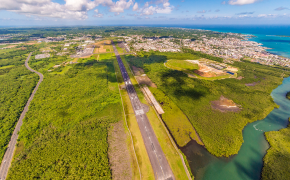
Cookies on GOV.UK
We use some essential cookies to make this website work.
We’d like to set additional cookies to understand how you use GOV.UK, remember your settings and improve government services.
We also use cookies set by other sites to help us deliver content from their services.
You have accepted additional cookies. You can change your cookie settings at any time.
You have rejected additional cookies. You can change your cookie settings at any time.
- Passports, travel and living abroad
- Travel abroad
- Foreign travel advice
Entry requirements
This information is for people travelling on a full ‘British citizen’ passport from the UK. It is based on the UK government’s understanding of the current rules for the most common types of travel.
Guadeloupe is an Overseas Department of France (‘Département d’Outre-Mer’). The authorities in Guadeloupe set and enforce entry rules. If you’re not sure how these requirements apply to you, contact the French Consulate General in the UK .
COVID-19 rules
There are no COVID-19 testing or vaccination requirements for travellers entering Guadeloupe.
Passport validity requirements
Your passport must have an ‘expiry date’ at least 3 months after the date you plan to leave Guadeloupe.
Check with your travel provider that your passport and other travel documents meet requirements. Renew your passport if you need to.
You will be denied entry if you do not have a valid travel document or try to use a passport that has been reported lost or stolen.
Visa requirements
Guadeloupe is an Overseas Department of France and so is part of the EU.
You can visit Guadeloupe without a visa for up to 90 days, for tourism or business. To stay longer, to work or study, for business travel or for other reasons, check the visa application process and timelines on the French visa website.
UK residents of Guadeloupe
Carry your residence document, as well as your passport, when entering or exiting Guadeloupe. If you have applied but not yet received your document, carry your certificate of application. You will have received this as an email.
Vaccine requirements
You must have a certificate to prove you’ve had a yellow fever vaccination if you’re coming from a country listed as a transmission risk .
For full details about medical entry requirements and recommended vaccinations, see TravelHealthPro’s Guadeloupe guide .
Customs rules
There are strict rules about goods you can take into or out of Guadeloupe . You must declare anything that may be prohibited or subject to tax or duty.
Taking food into Guadeloupe
You cannot take meat, milk or products containing them into EU countries . There are some exceptions such as powdered baby milk, baby food and special foods or pet feed required for medical reasons.
Taking money into Guadeloupe
Check what cash and valuables you need to declare to bring them into Guadeloupe.
Related content
Is this page useful.
- Yes this page is useful
- No this page is not useful
Help us improve GOV.UK
Don’t include personal or financial information like your National Insurance number or credit card details.
To help us improve GOV.UK, we’d like to know more about your visit today. Please fill in this survey (opens in a new tab) .

- Destinations
- Inspirations
- Séjours linguistiques

- Espace Cadeau
- Créons votre voyage
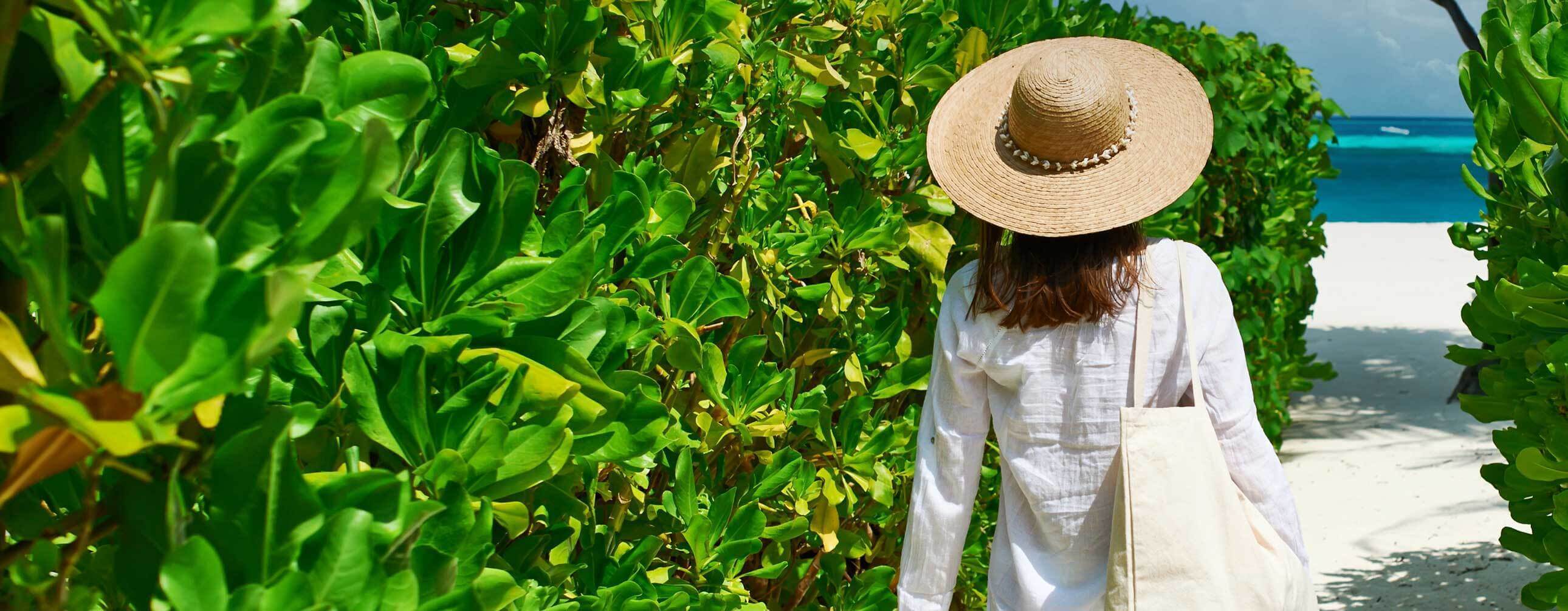
Travel Boutic, votre Agence de voyage sur mesure en Guadeloupe
Travel Boutic, c’est votre agence de voyage en Guadeloupe qui organise vos séjours sur mesure. Vous ne vous occupez de rien, Travel Boutic fait tout en fonction de vos envies ! Créons votre voyage dès maintenant !
Evadez-vous
Vers la destination de votre choix !
TRESORS DU MEXIQUE
Où voudriez-vous être en ce moment ?
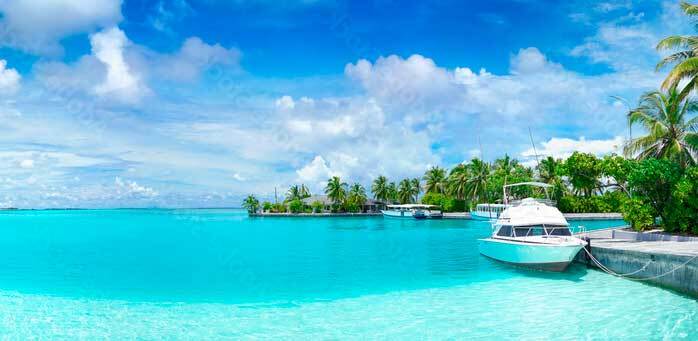
Les Seychelles
Contactez-nous
- Du lundi au vendredi de 9h00 à 17h30
- Fermé le dimanche
- Téléphone +590 590 387 001
- Email [email protected]
- Agence Guadeloupe Immeuble Montana 29 Parc d'activités de Jabrun, Convenance 97122 Baie-Mahault
- Agence St-Martin Puerta Del Sol 68 Welfare Road Simpson Bay
- Cadeau Voyage

© 2021 - 2024 Travel boutic. Tous droits réservés. Réalisation Altitude Design | Politique de confidentialité | Mentions légales | Conditions générales de ventes
Nous utilisons des cookies sur notre site pour vous offrir une meilleure expérience utilisateur (ex : préférences et fluidité de navigation, contenus adaptés à votre navigation, etc...). En continuant la navigation, vous acceptez la sauvegarde des cookies sur votre ordinateur pour les finalités précitées. En savoir plus
Security Alert May 17, 2024
Worldwide caution, update may 10, 2024, information for u.s. citizens in the middle east.
- Travel Advisories |
- Contact Us |
- MyTravelGov |
Find U.S. Embassies & Consulates
Travel.state.gov, congressional liaison, special issuance agency, u.s. passports, international travel, intercountry adoption, international parental child abduction, records and authentications, popular links, travel advisories, mytravelgov, stay connected, legal resources, legal information, info for u.s. law enforcement, replace or certify documents.
Share this page:
French West Indies Travel Advisory
Travel advisory july 17, 2023, french west indies - level 1: exercise normal precautions.
Reissued with obsolete COVID-19 page links removed.
Exercise normal precautions in the French West Indies, which includes the islands of Guadeloupe, Martinique, French Saint Martin, and Saint Barthélemy.
Read the country information page for additional information on travel to the French West Indies.
If you decide to travel to the French West Indies:
- Enroll in the Smart Traveler Enrollment Program (STEP) to receive Alerts and make it easier to locate you in an emergency.
- Follow the Department of State on Facebook and Twitter .
- Review the Country Security Report for Barbados, which includes the French West Indies.
- Prepare a contingency plan for emergency situations. Review the Traveler’s Checklist .
- Visit the CDC page for the latest Travel Health Information related to your travel.
Travel Advisory Levels
Assistance for u.s. citizens, french west indies map, search for travel advisories, external link.
You are about to leave travel.state.gov for an external website that is not maintained by the U.S. Department of State.
Links to external websites are provided as a convenience and should not be construed as an endorsement by the U.S. Department of State of the views or products contained therein. If you wish to remain on travel.state.gov, click the "cancel" message.
You are about to visit:

IMAGES
COMMENTS
Guadeloupe Islands - Travel Guide & tourism. New York, NY - August 1st, 2022: COVID-19 SITUATION UPDATE. All COVID-19 restrictions applied to international travelers entering the Guadeloupe archipelago have been lifted. Following a new law voted July 30, 2022, the French parliament has declared the end to the public health emergency and ...
By mardel66. 5,279. Guadeloupe. Featuring white-sand beaches, volcanic peaks, and protected parks, along with some of the most impressive dive spots in the world, Guadeloupe is an island hopper's paradise. This French archipelago is one of the Caribbean's best-kept secrets, offering a more relaxed alternative to its better-known neighbors.
The thing about the Guadeloupe Islands, though, is that this isn't the "typical" Caribbean destination. You can't, or at least shouldn't, just pack your bags and board the next flight out of Terminal 5. (Although I certainly wouldn't blame you.) Some of this information is common sense, but it still bears repeating and reinforcing.
Guadeloupe. Caribbean. An archipelago of over a dozen sun-kissed islands, Guadeloupe is a varied place to holiday, with everything from deserted beaches to jungle-wreathed mountains. The country's two main islands look like the wings of a butterfly and are joined together by just a couple of bridges and a mangrove swamp.
Book a Guadeloupe tour and get to know the culture through a local. Sailing and Snorkeling Day Tour to Les Saintes from Saint Charles. Guided Guadeloupe Kayak Excursion from Morne-A-l'Eau. Sunset Cruise in Deshaies. Flight Over Guadeloupe In Autogyro from Saint-Francois. Small Day Cruise from Les Abymes.
Guadeloupe travel guide: best things to do in Guadeloupe. To well begin the travel guide to Guadeloupe, ... There is plenty of companies ready to rent you a car, both local and independent, and big international agencies. While being in Guadeloupe, I rented a small car from a well-known company and it gave me a great possibility to visit all ...
At This New Luxury Caribbean Resort, Every Room Has a Pool. Rainforests, beaches, volcanoes and world-class restaurants. The island of Basse-Terre in the Guadeloupe archipelago has long boasted one of the most diverse travel offerings in the Eastern Caribbean. 25 février 2023. More.
From Guadeloupe, to travel in the surrounding places, here is an idea of the prices (roundtrip): Trinidad ~€250, Barbade ~€260, Puerto Rico ~€300, Dominican Republic ~€350, Cuba ~€550. You can obtain information at Agence Penchard, 1 bis rue de la République 97100 Basse-Terre, Tel 0590 812 712 Fax 0590 810 711.
Guadeloupe - one of the French islands in the Caribbean, is an archipelago. A collection of five islands, Guadeloupe includes the main islands of Basse-Terre and Grande-Terre along with the smaller islands of Marie-Galante, La Désirade, and the Îles des Saintes. With history influenced by Indian, African, and French traditions, Guadeloupe is rich in culture as well as beautiful natural sites!
The Guadeloupe Islands. An overseas region of France, The Guadeloupe Islands are an archipelago covering some 630 square miles and made up of five main islands. A bridge connects the two most populated ones, Grande-Terre and Basse-Terre, while Marie-Galante, Les Saintes (actually a miniature archipelago of its own), and La Désirade are ...
Guadeloupe Travel Guide. Caribbean Guadeloupe. Pristine beaches, a vibrant rainforest, and decadent French-Creole cuisine give this department of France a wildly different vibe from its eastern Caribbean neighbors. 8 Perfect Beaches in Gorgeous Guadeloupe. Visit the French Caribbean Nation of Guadeloupe. Top Things to Do in Guadeloupe. Pristine ...
French Caribbean International has been the premier guide to the French West Indies since 1994. We provide a wealth of helpful travel information for visitors to the Caribbean islands of St. Barthélemy (St. Barts, St. Barth, St. Barths), St. Martin / St. Maarten, Martinique, Guadeloupe, Les Saintes and Marie-Galante.
French customs authorities may enforce strict regulations in Guadeloupe concerning temporary import or export of items such as firearms, medications or animals. Driving. You may drive in Guadeloupe with a valid Canadian driver's license for up to 20 days. After that period, you must have an international driving permit.
The Foreign, Commonwealth & Development Office ( FCDO) provides advice about risks of travel to help British nationals make informed decisions. Find out more about FCDO travel advice . Follow and ...
All international travelers should be fully vaccinated against measles with the measles-mumps-rubella (MMR) vaccine, including an early dose for infants 6-11 months, according to CDC's measles vaccination recommendations for international travel. Measles (Rubeola) - CDC Yellow Book. Rabies: Guadeloupe is free of dog rabies.
The Guadeloupe Islands is now open to fully vaccinated Americans, and nonstop flights from the United States are scheduled to resume this July. As of June 11, fully vaccinated individuals visiting the French Caribbean archipelago can avoid quarantine by presenting proof of an accepted COVID-19 vaccination, including Pfizer, Moderna, AstraZeneca ...
Prices are around 150€ round trip, Going to Guadeloupe from Saint Martin: Air Antilles Express and Air Caraïbes fly to Guadeloupe from Saint Martin. Count between 120 and 160€ round trip, Going from Saint Barthelemy to Guadeloupe: only Air Antilles Express serves Guadeloupe. 120 to 140€ return ticket.
Call us in Washington, D.C. at 1-888-407-4747 (toll-free in the United States and Canada) or 1-202-501-4444 (from all other countries) from 8:00 a.m. to 8:00 p.m., Eastern Standard Time, Monday through Friday (except U.S. federal holidays). See the State Department's travel website for the Worldwide Caution and Travel Advisories.
Below, you will find all the air connections between New York (JFK) with JetBlue, Miami (MIA) with Air France and American Airlines, and Montreal (YUL) with Air Canada, Air France, and Air Transat, and Guadeloupe Pôle Caraïbes Airport for the 2023/2024 season! We hope that this list of airlines serving Guadeloupe will assist you in planning ...
Passport validity requirements. Your passport must have an 'expiry date' at least 3 months after the date you plan to leave Guadeloupe. Check with your travel provider that your passport and ...
Travel Boutic', spécialiste du voyagesur mesure en Guadeloupe : En famille, En Couple, Road trip, Croisière, Séjour linguistique, Vacances en Guadeloupe...Créons votre voyage
Exercise normal precautions in the French West Indies, which includes the islands of Guadeloupe, Martinique, French Saint Martin, and Saint Barthélemy. Read the country information page for additional information on travel to the French West Indies. If you decide to travel to the French West Indies: